
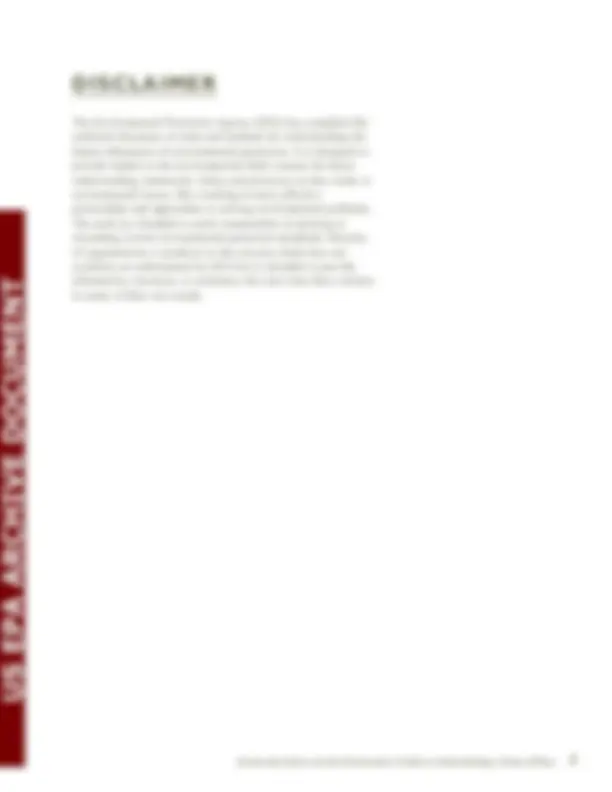

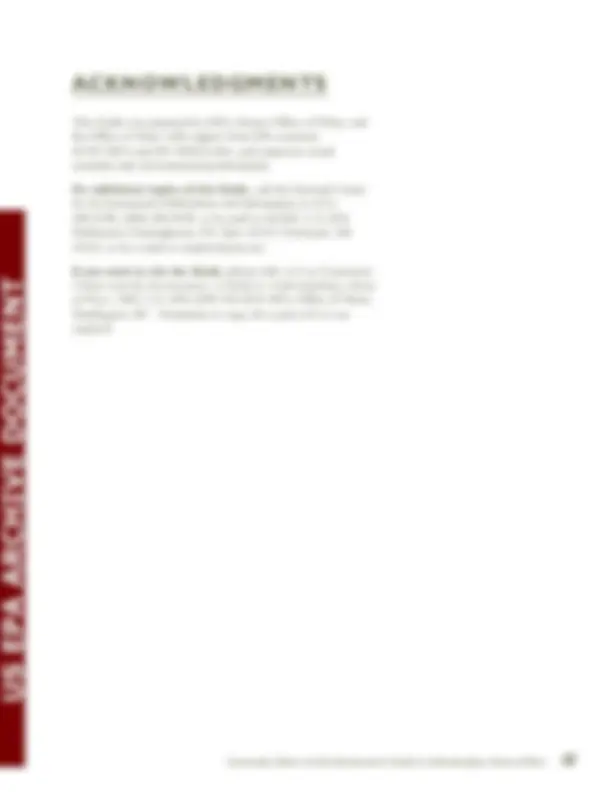

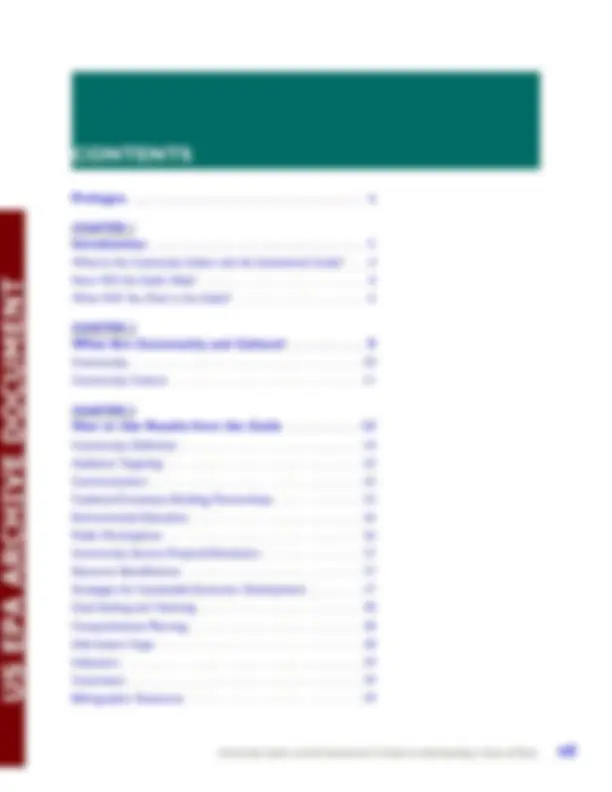
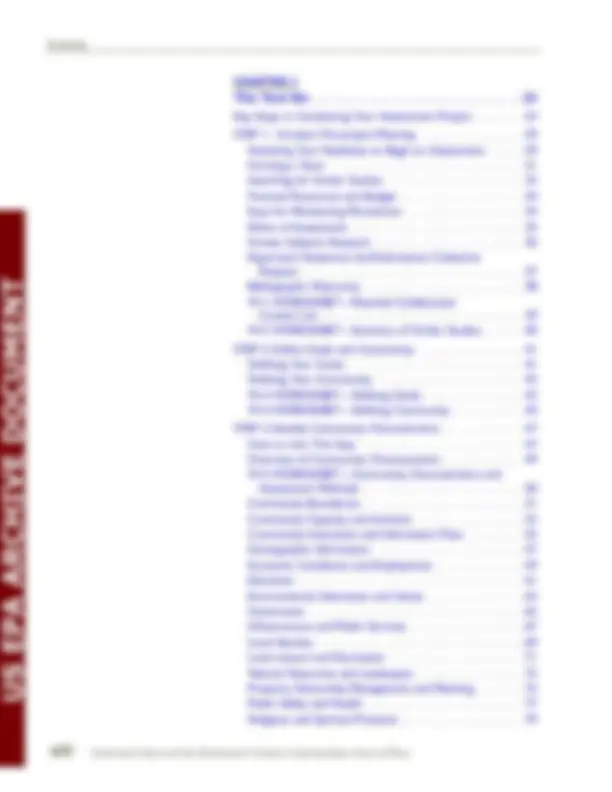

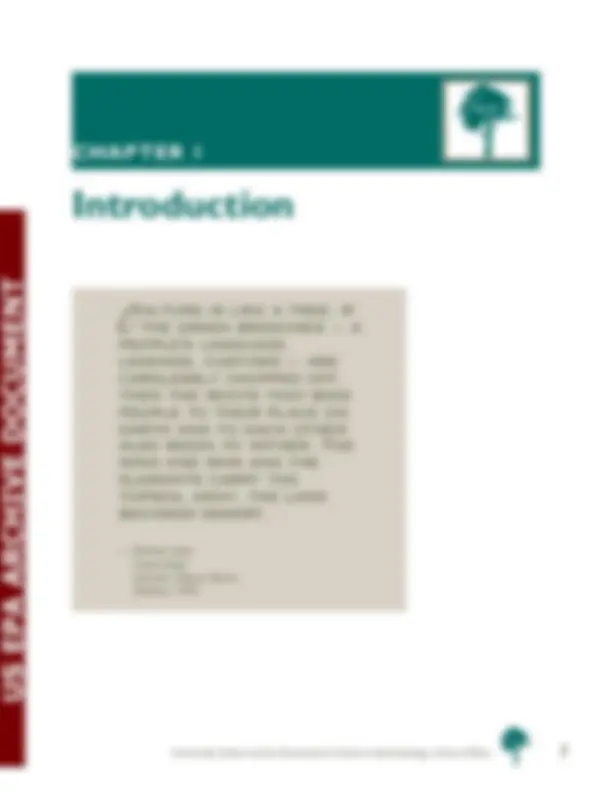
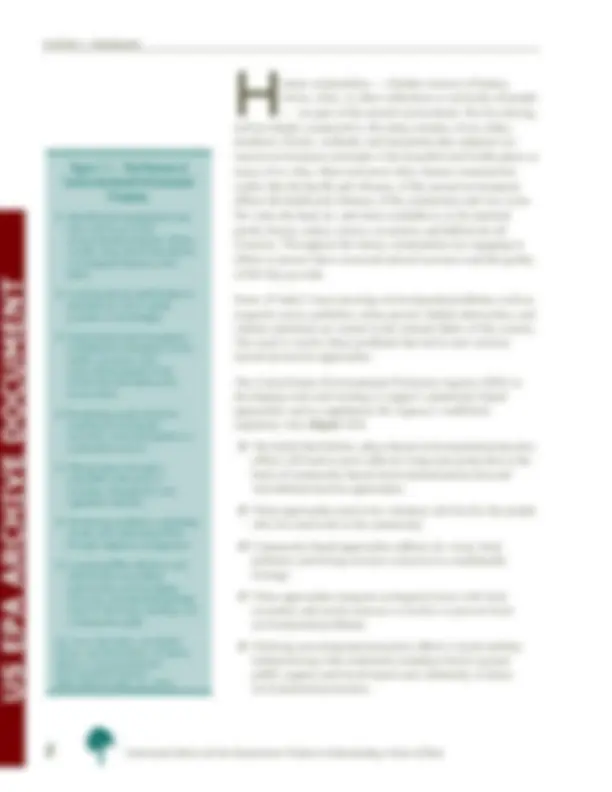
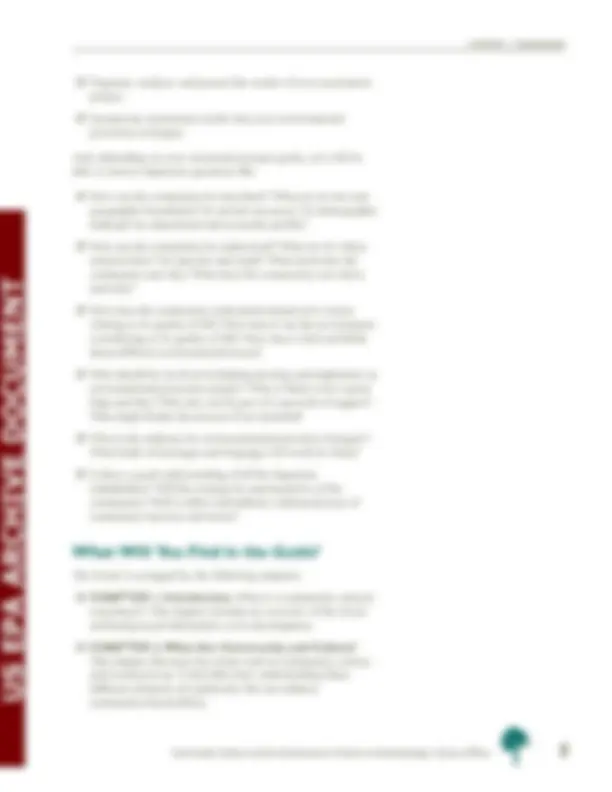
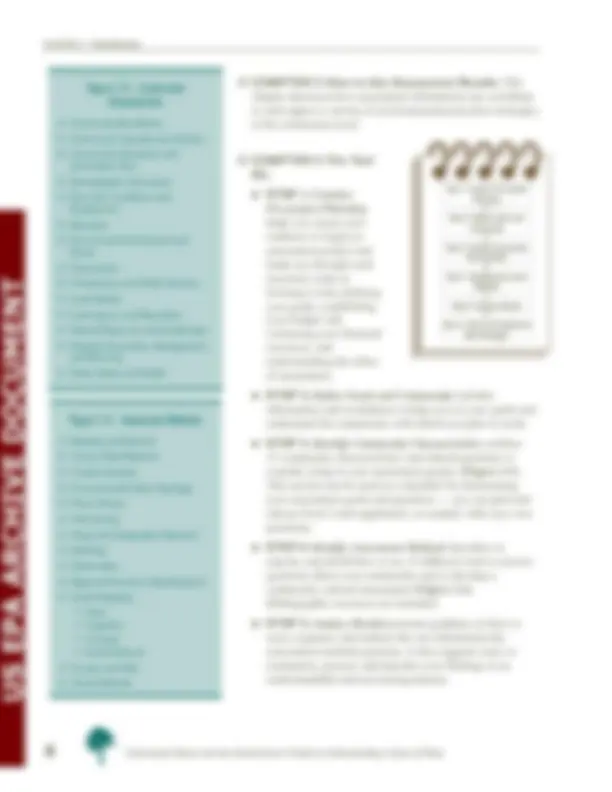
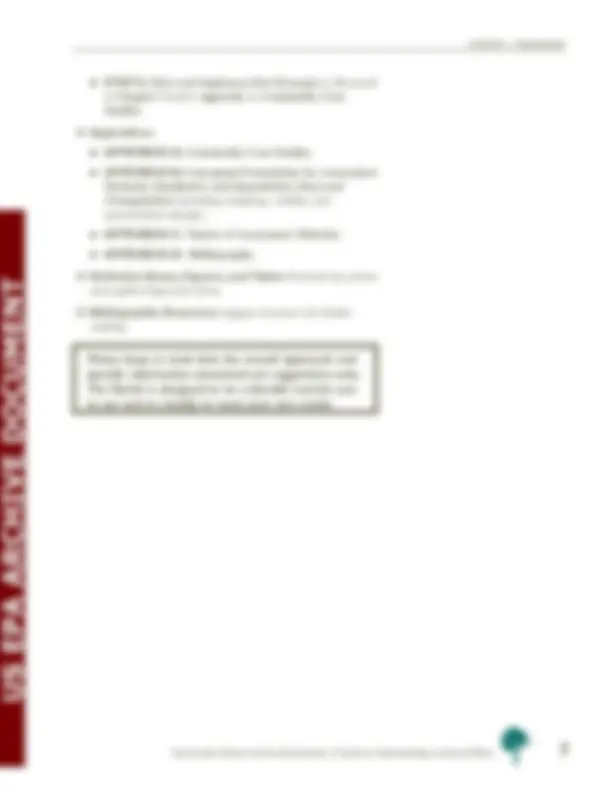

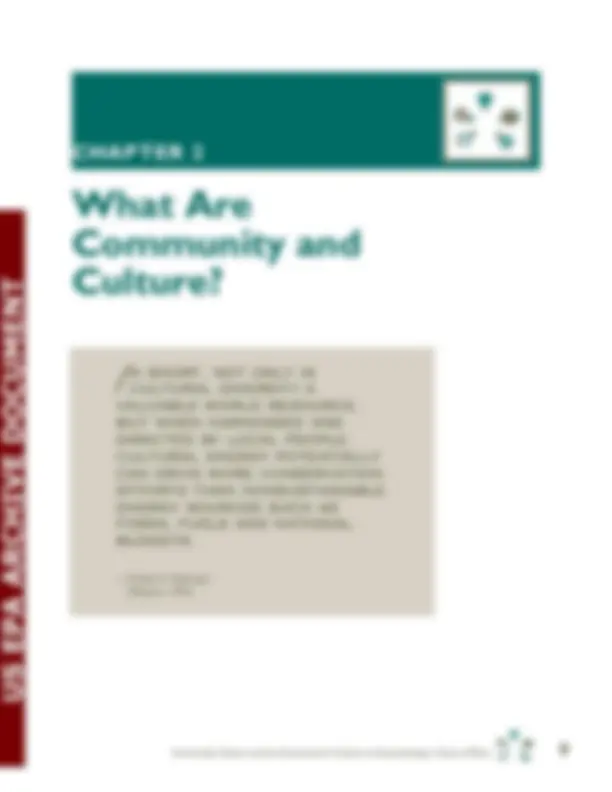
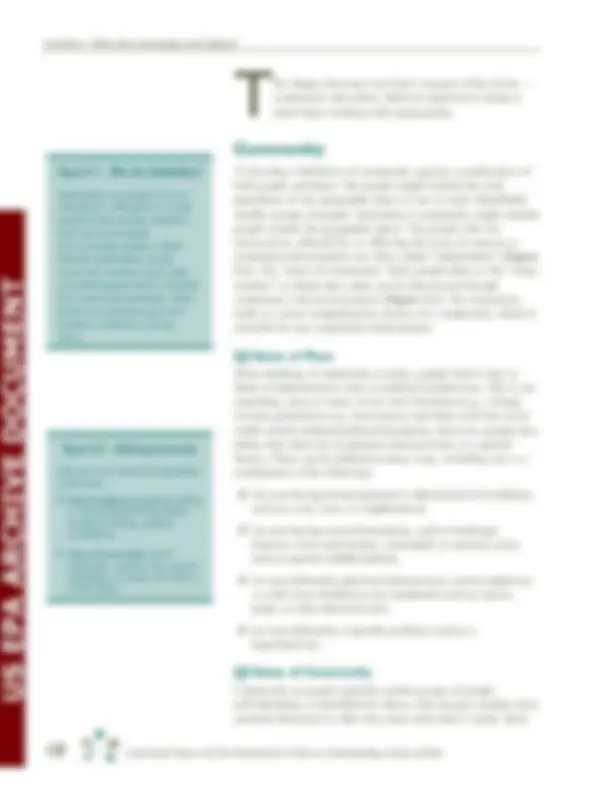
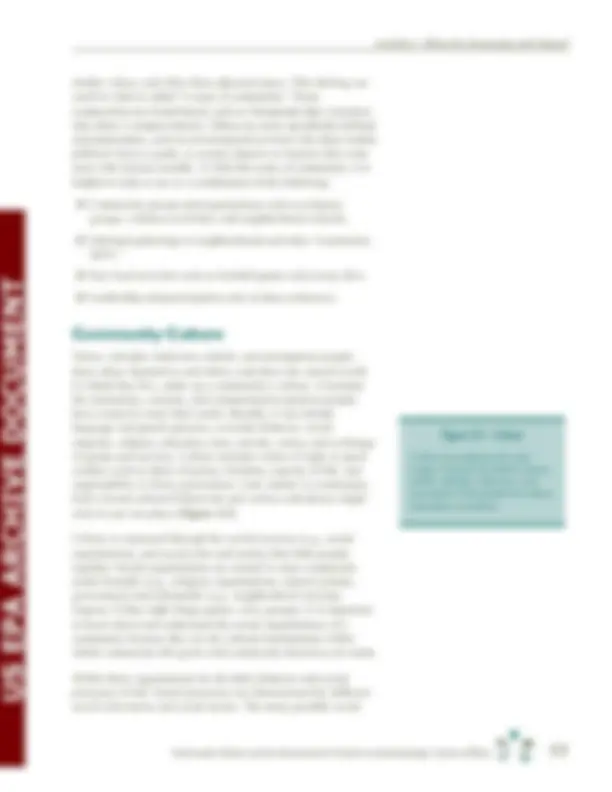
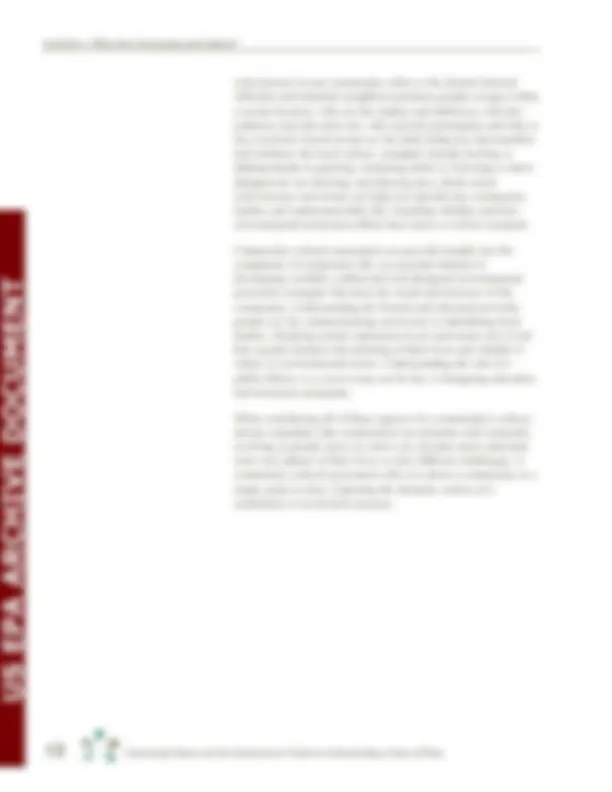
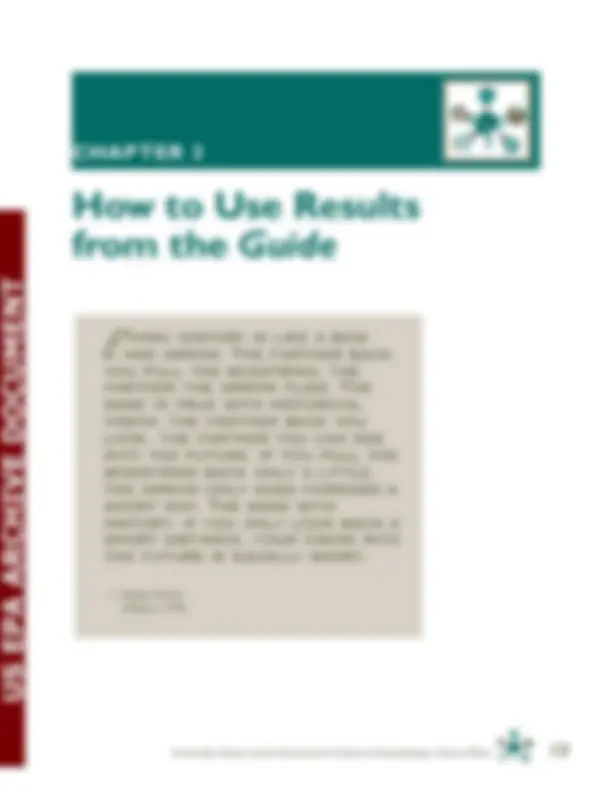
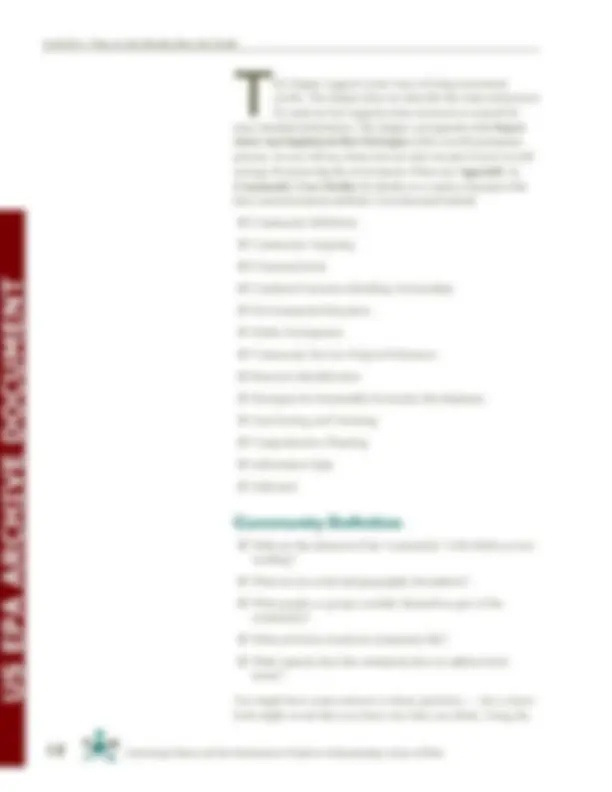
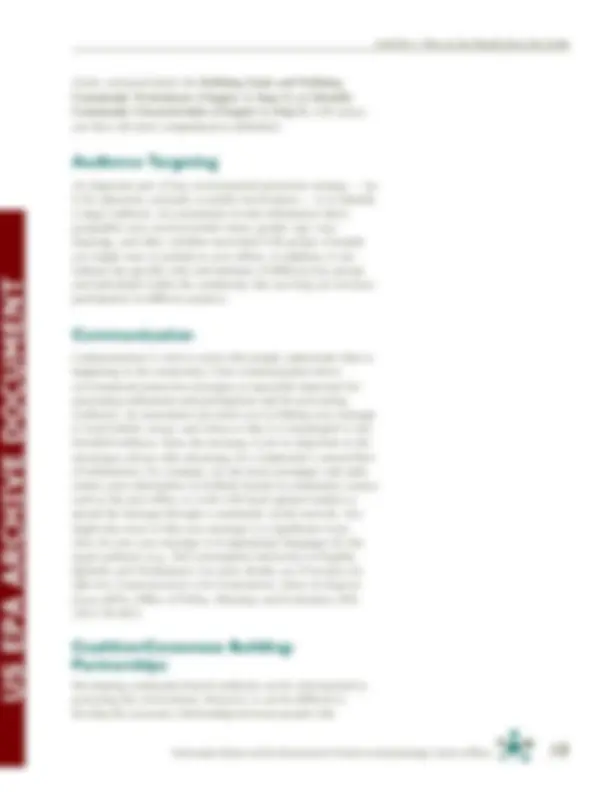
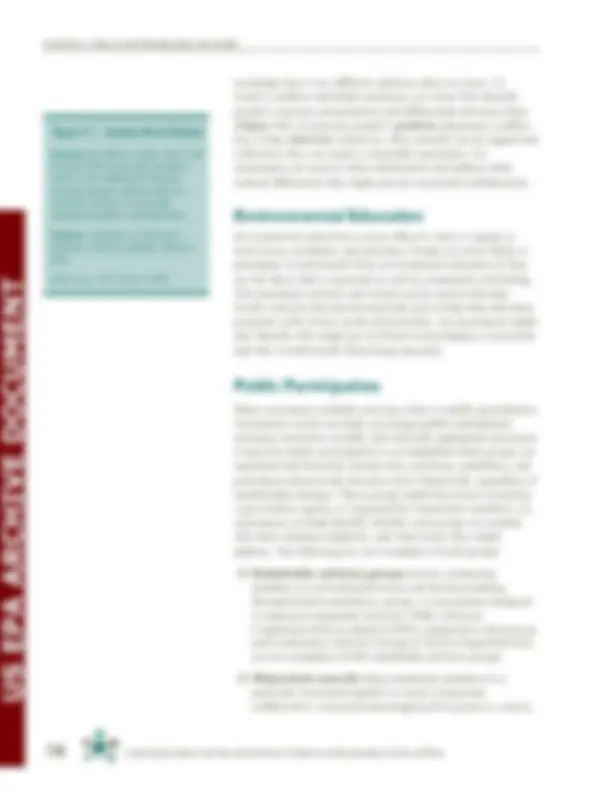
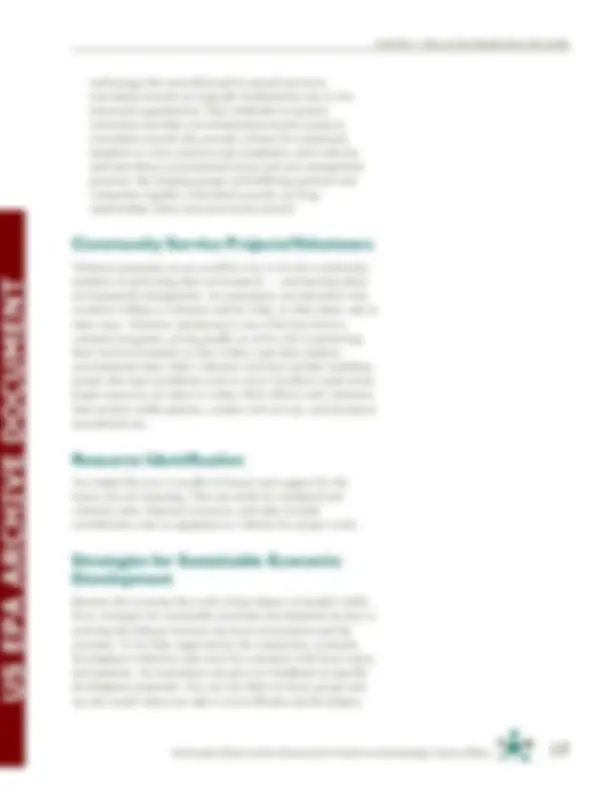
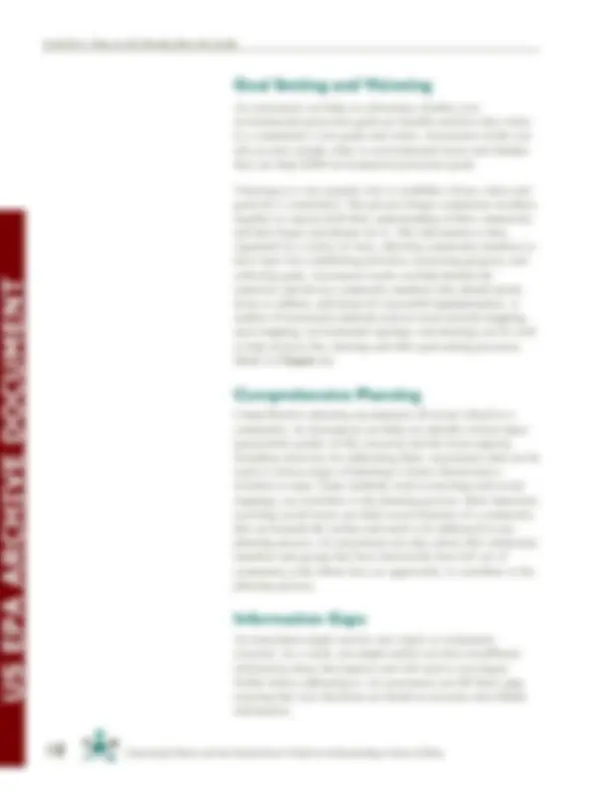
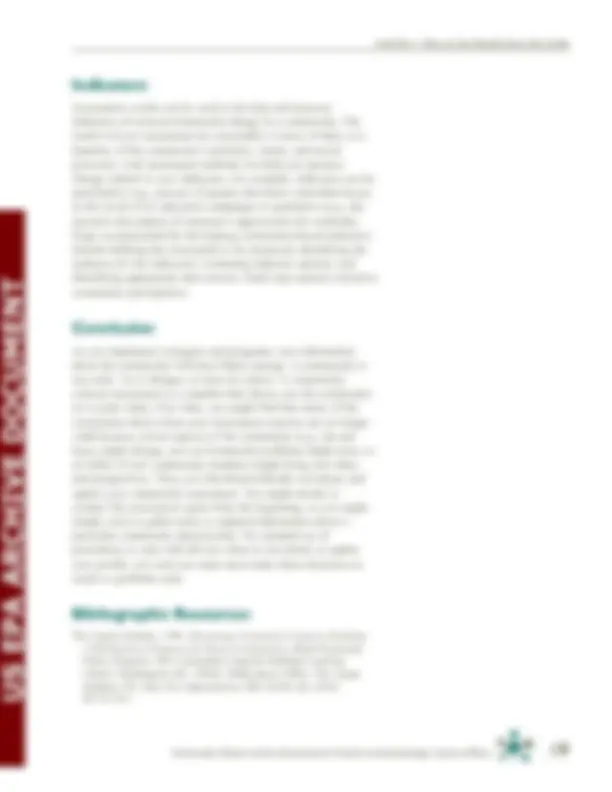
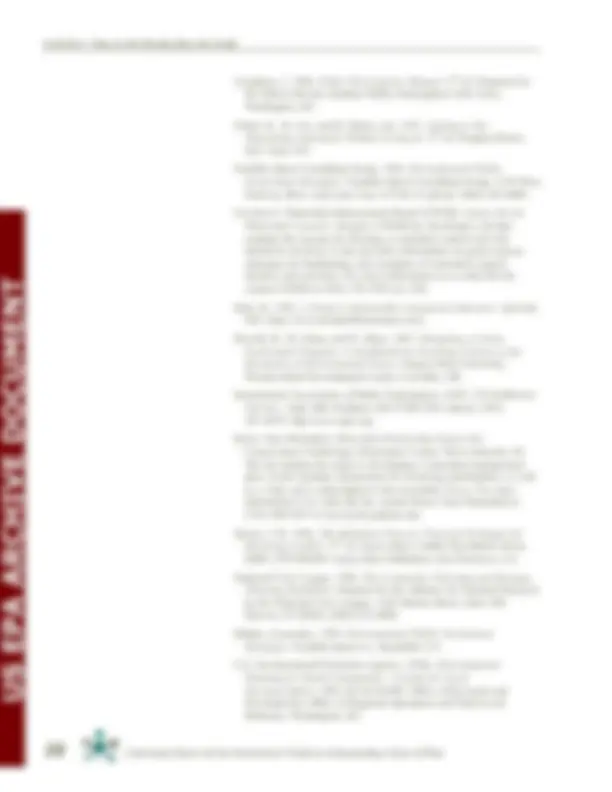
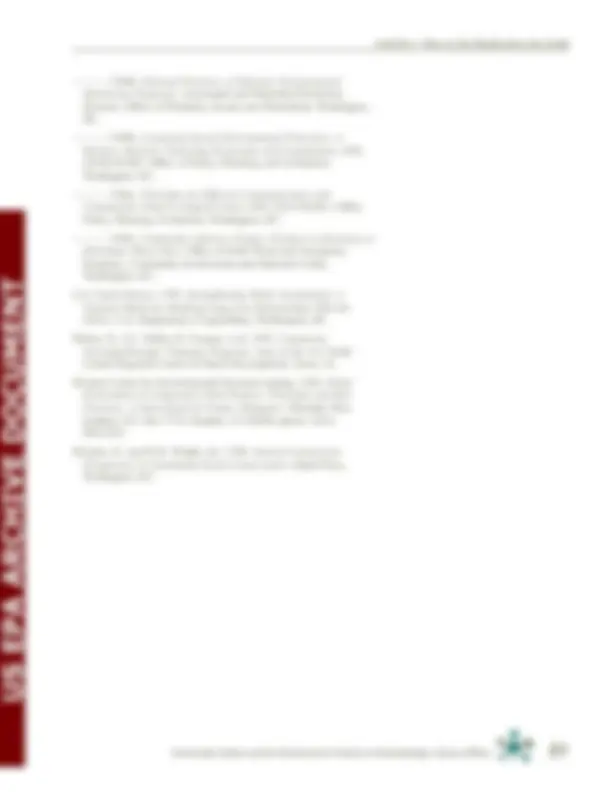

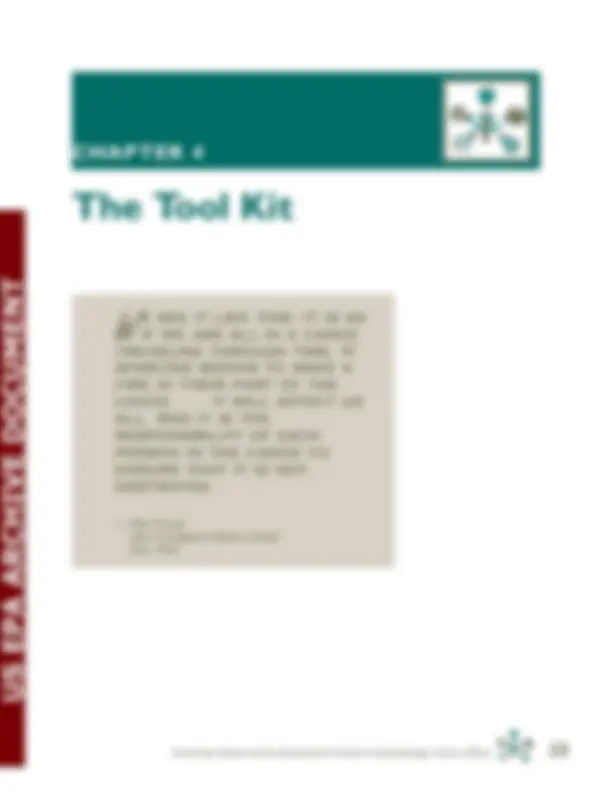
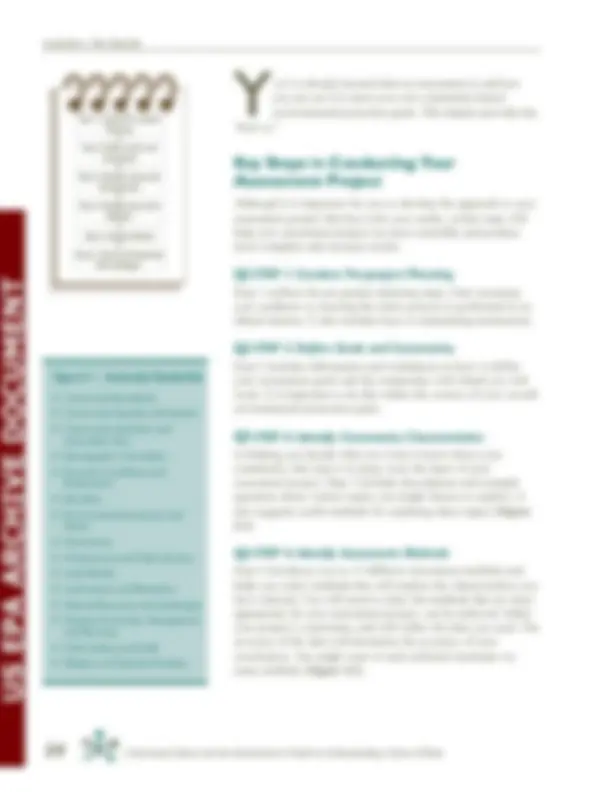
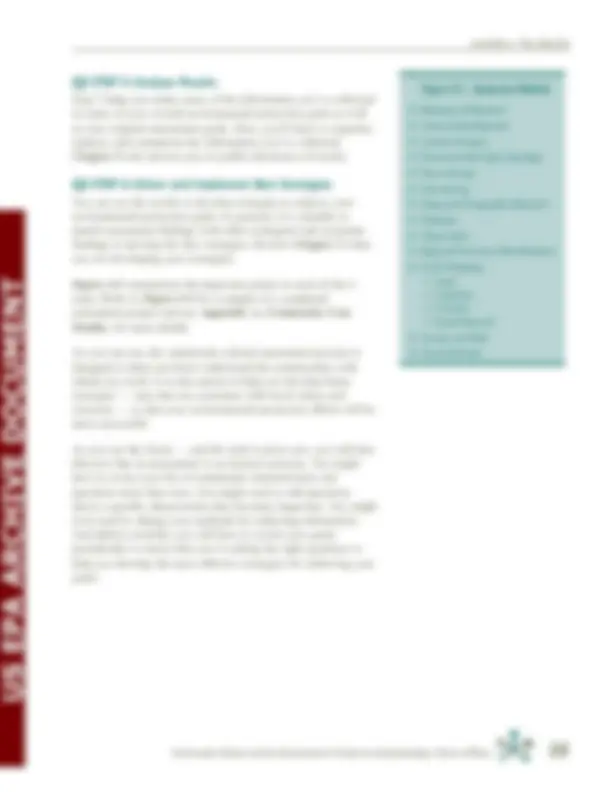
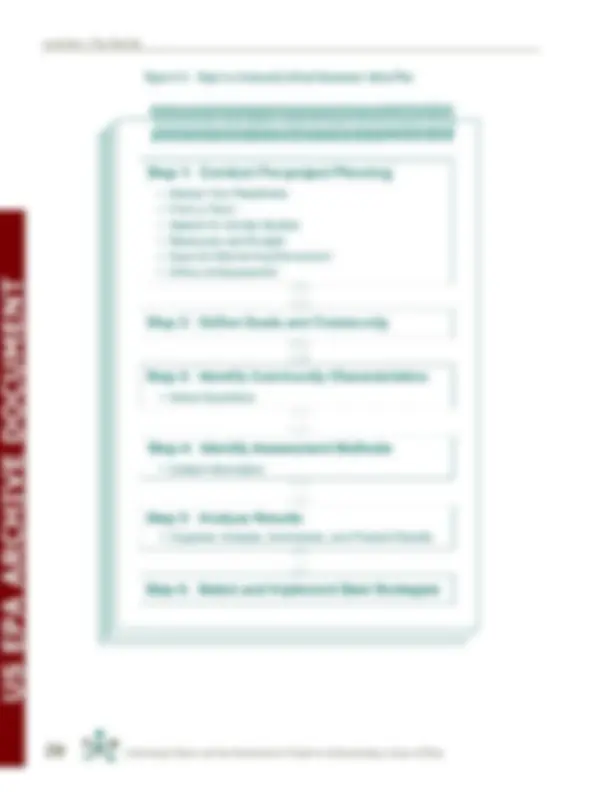
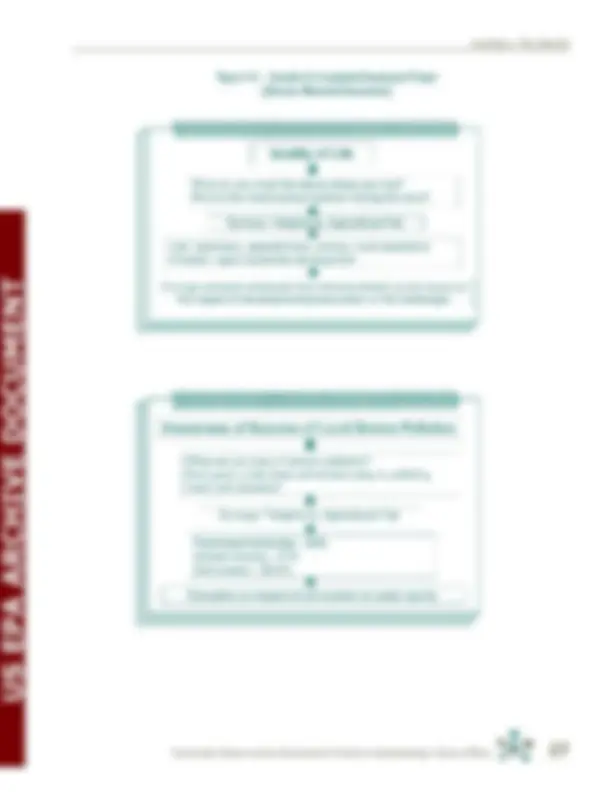
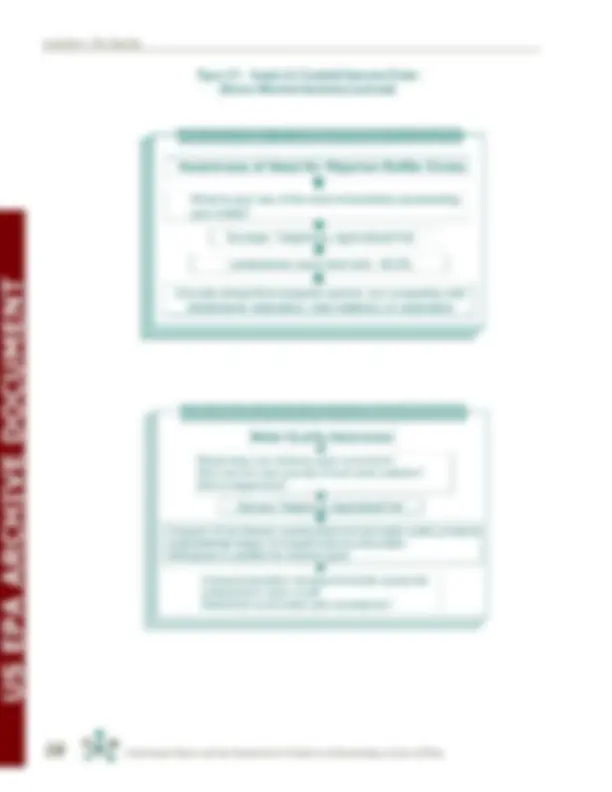
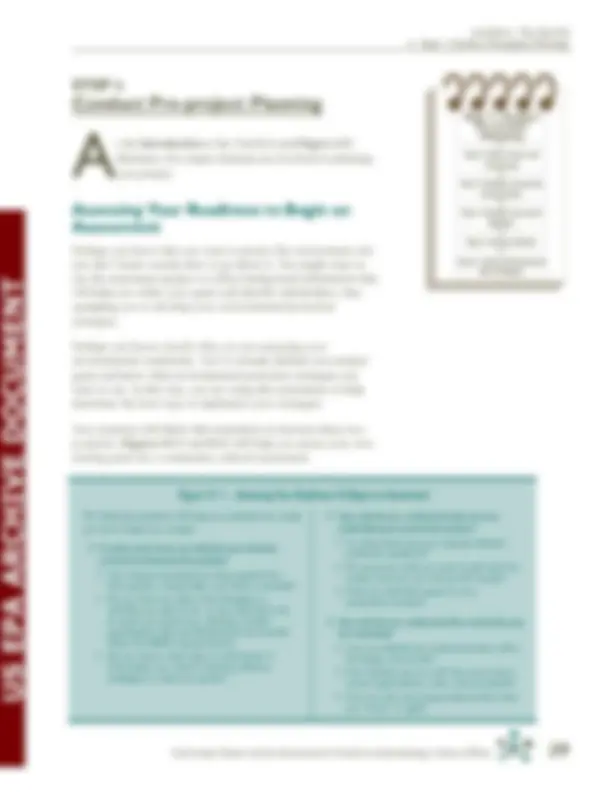
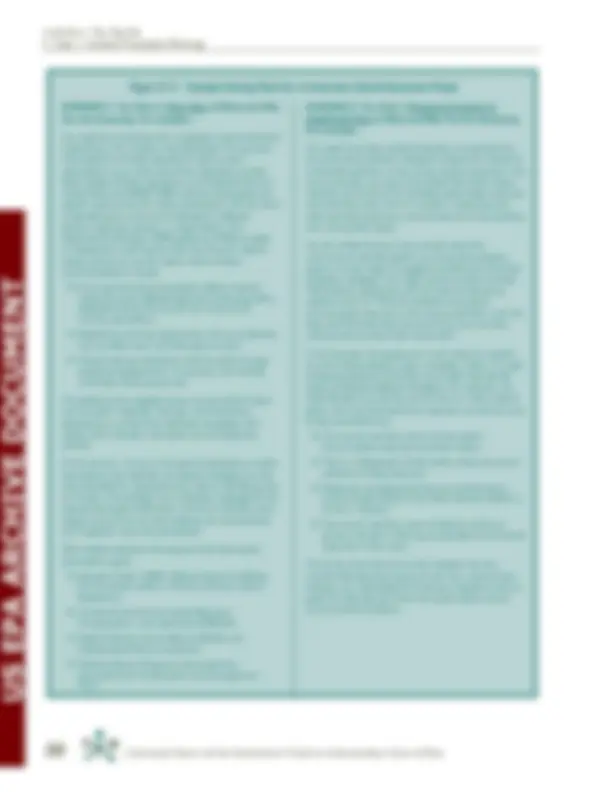
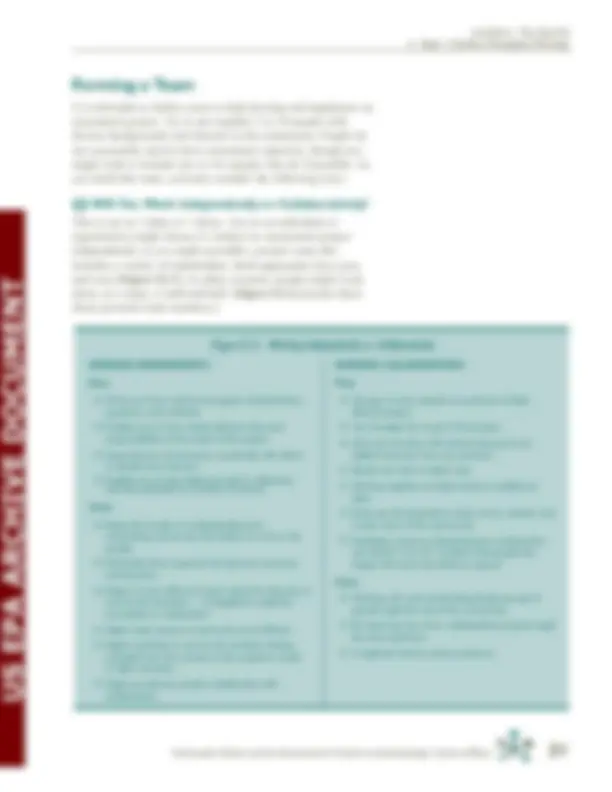
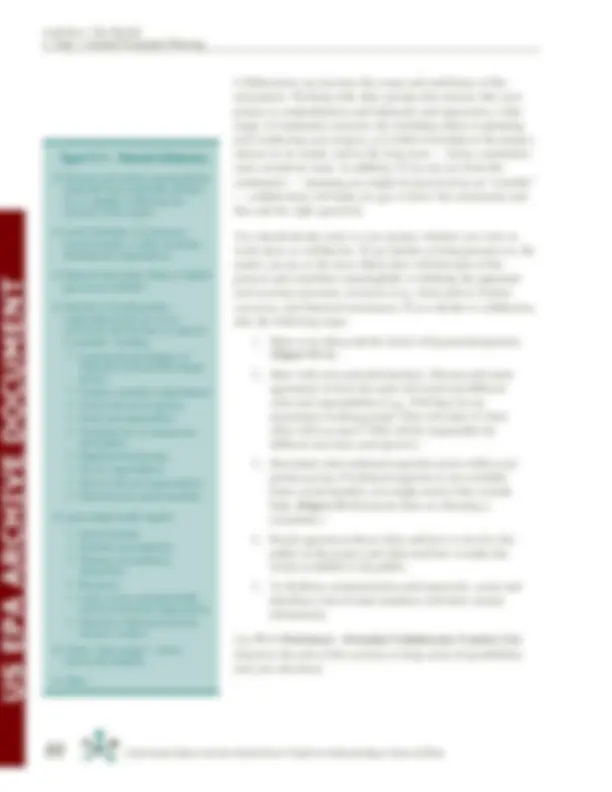
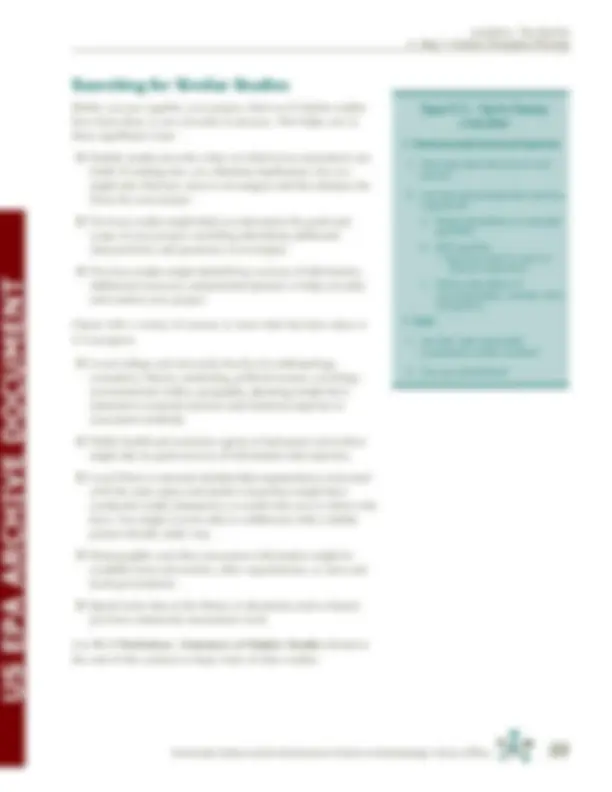
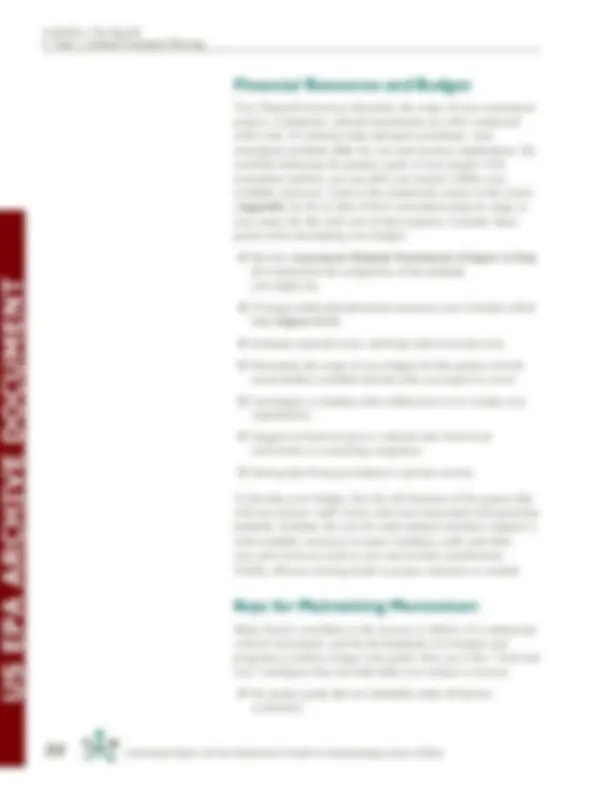
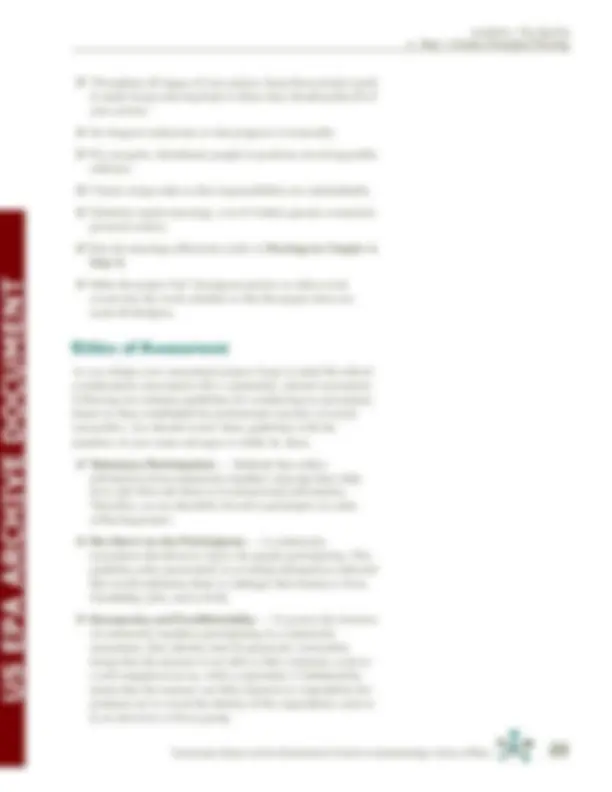
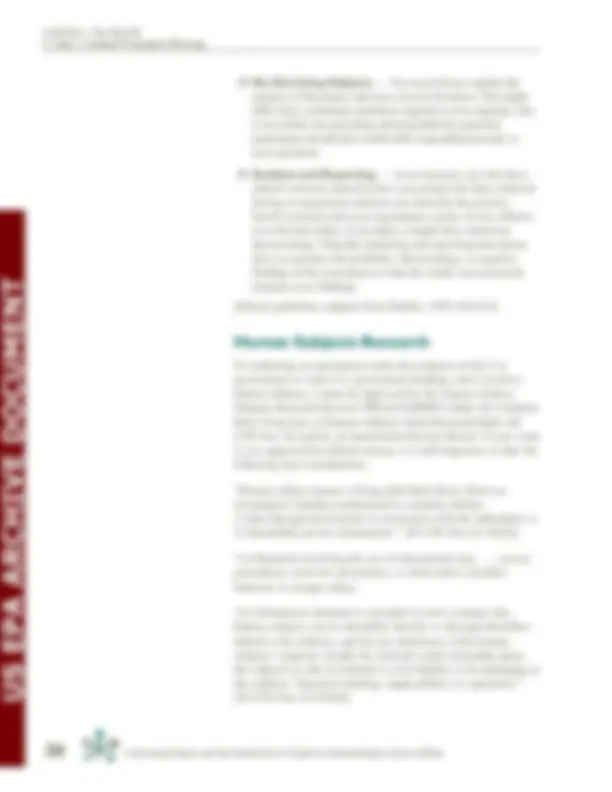
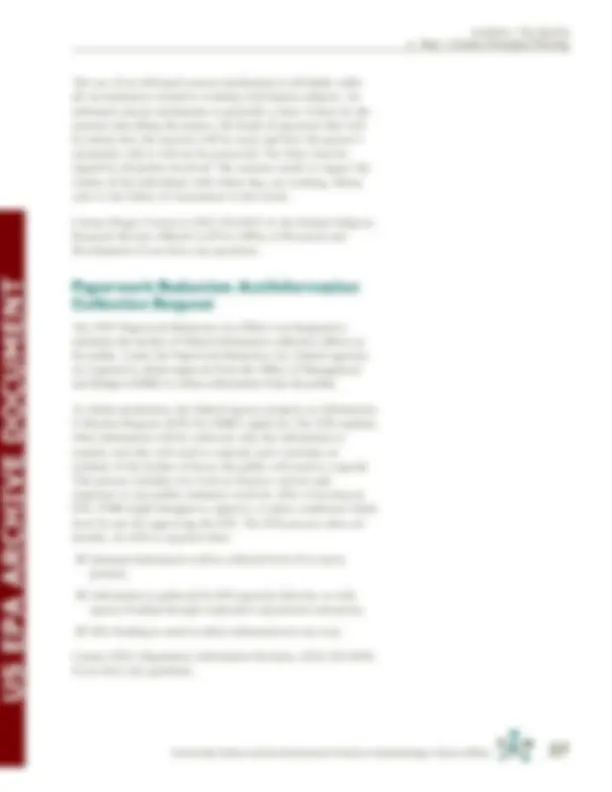
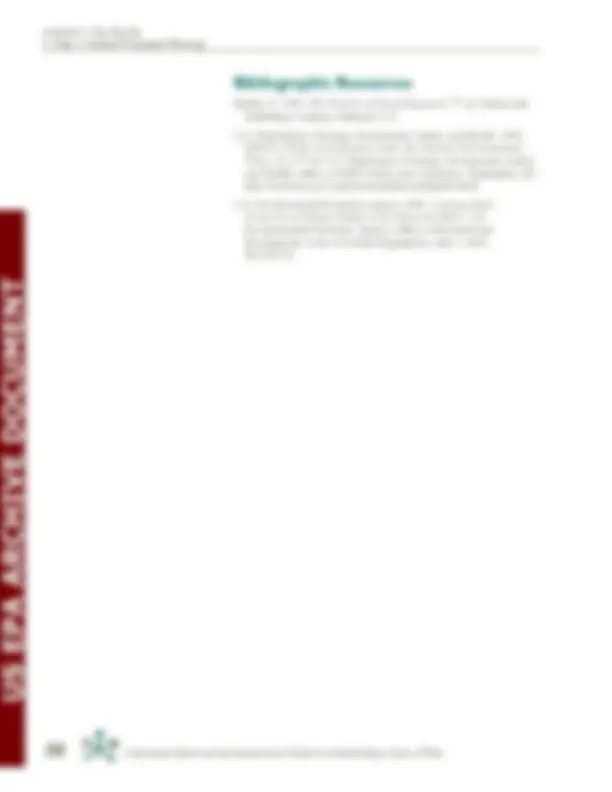
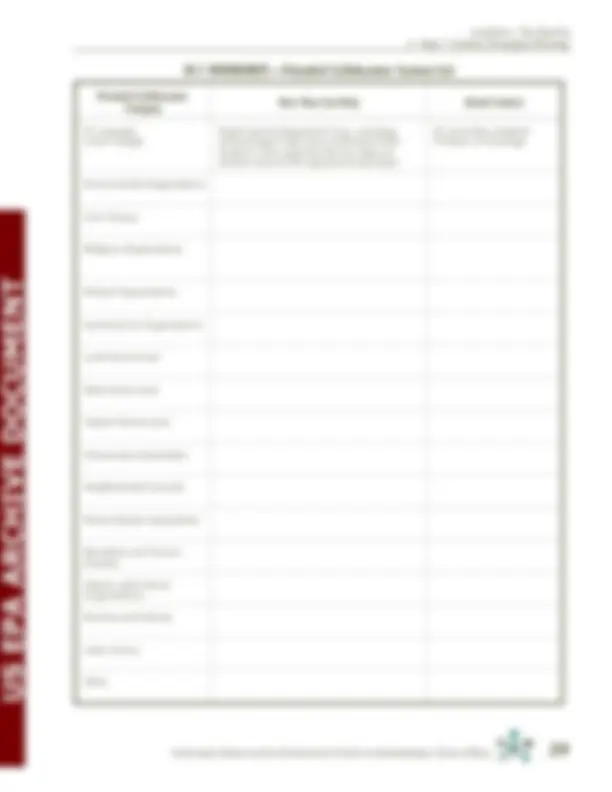

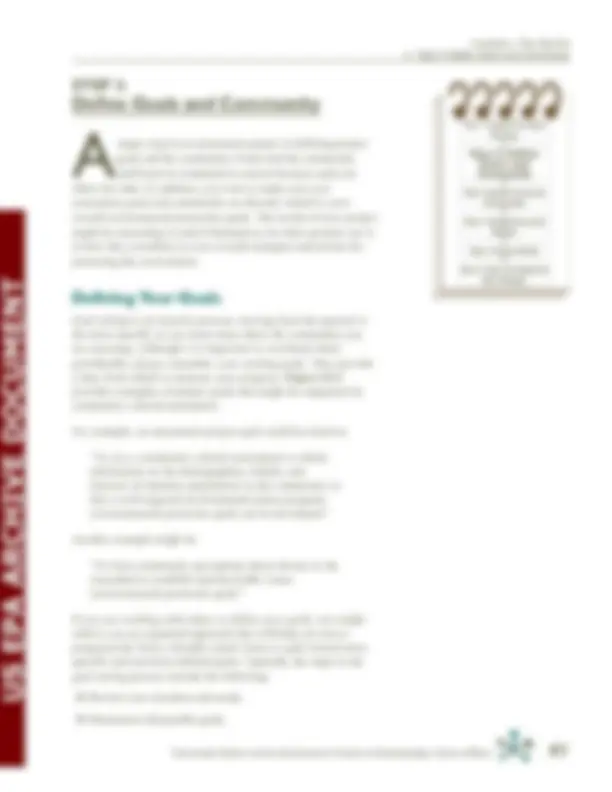
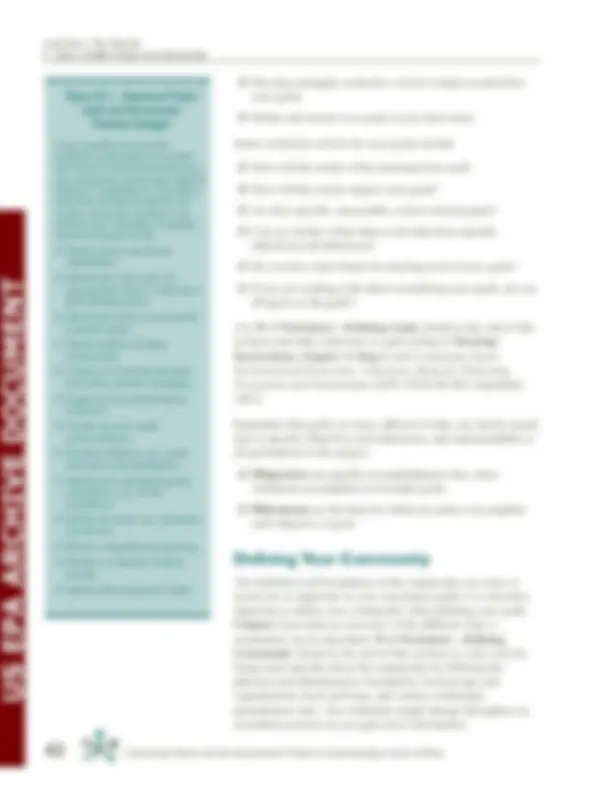

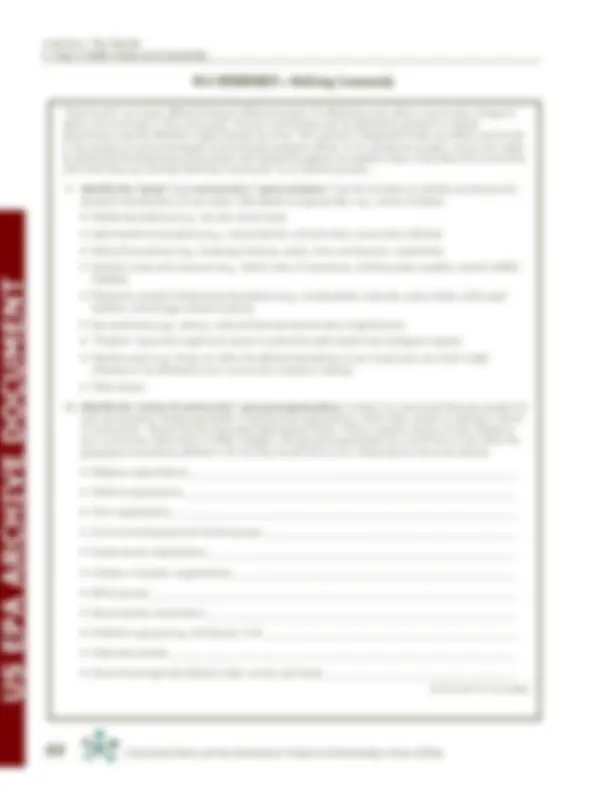
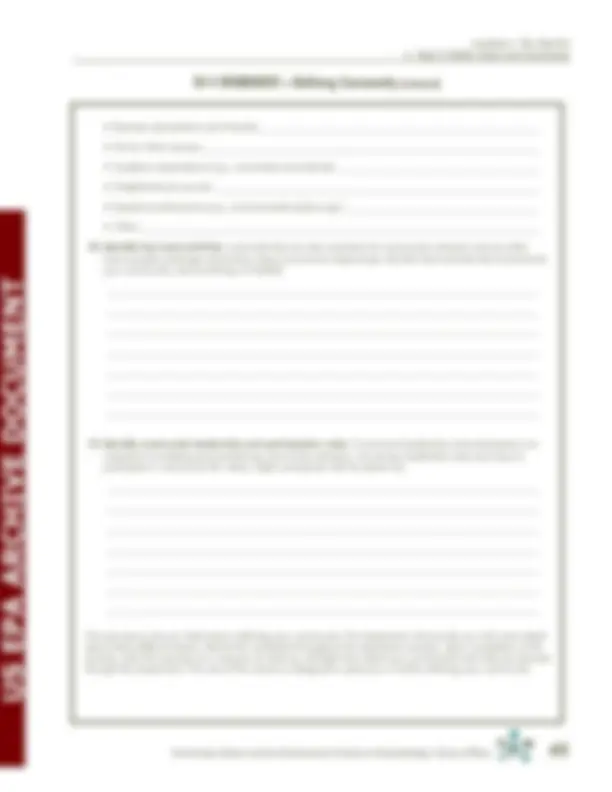

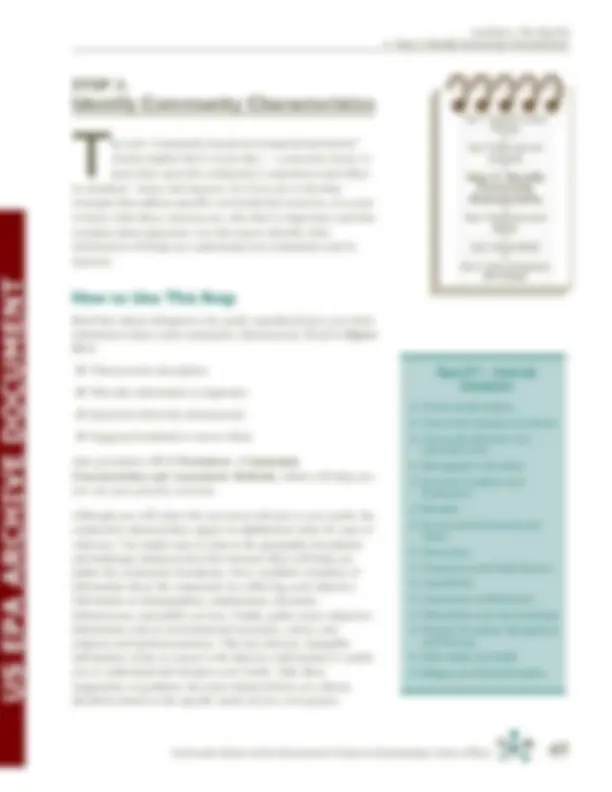
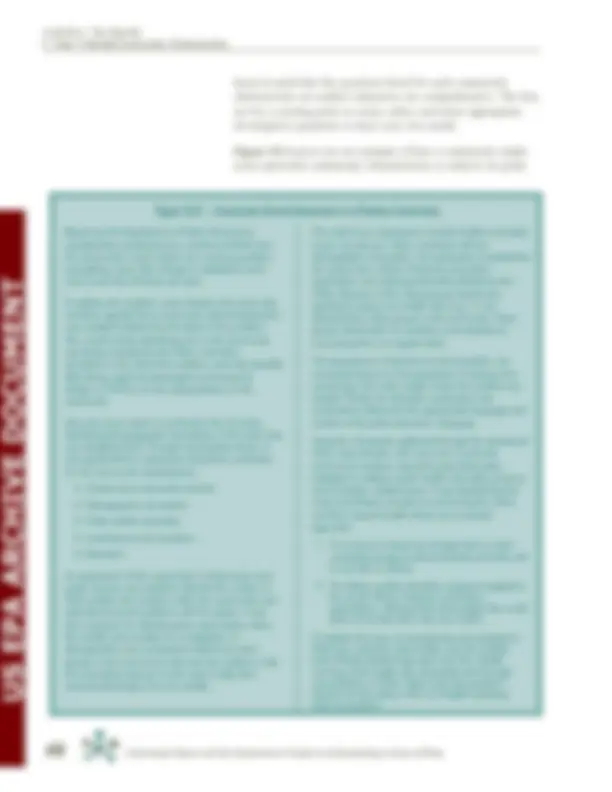
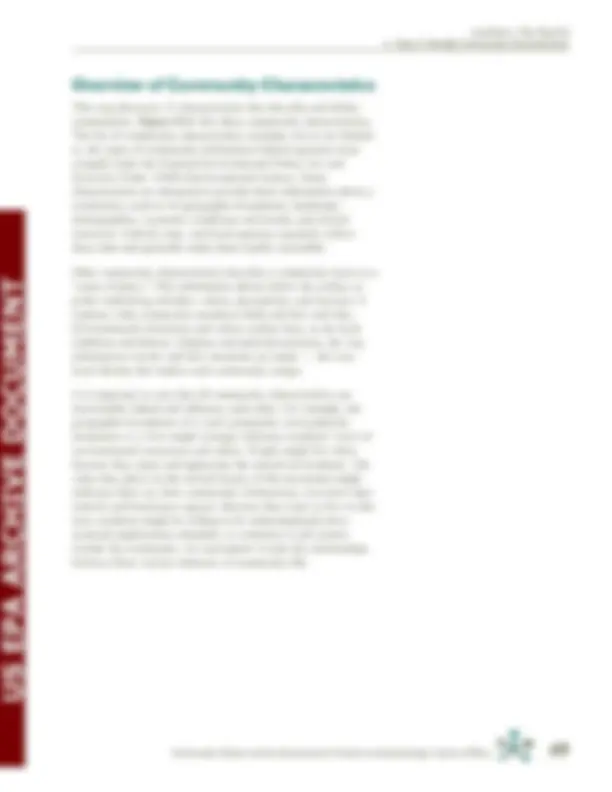

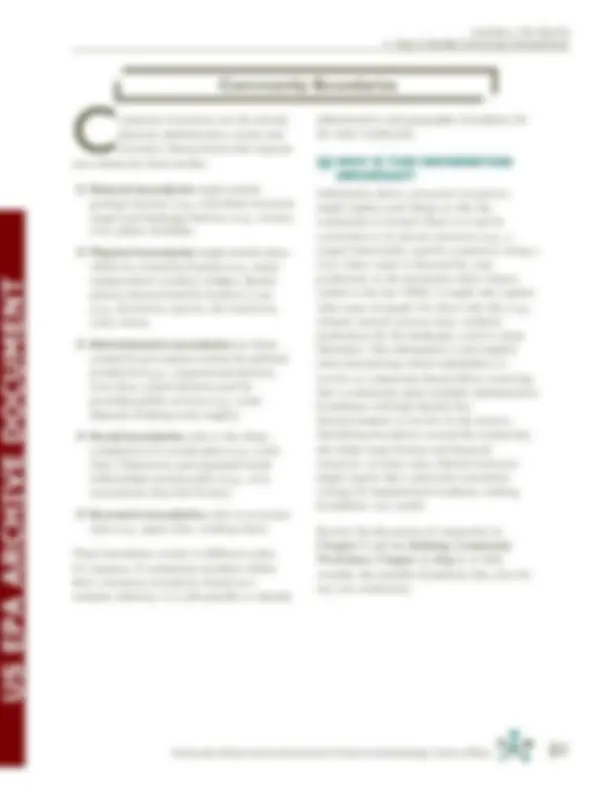
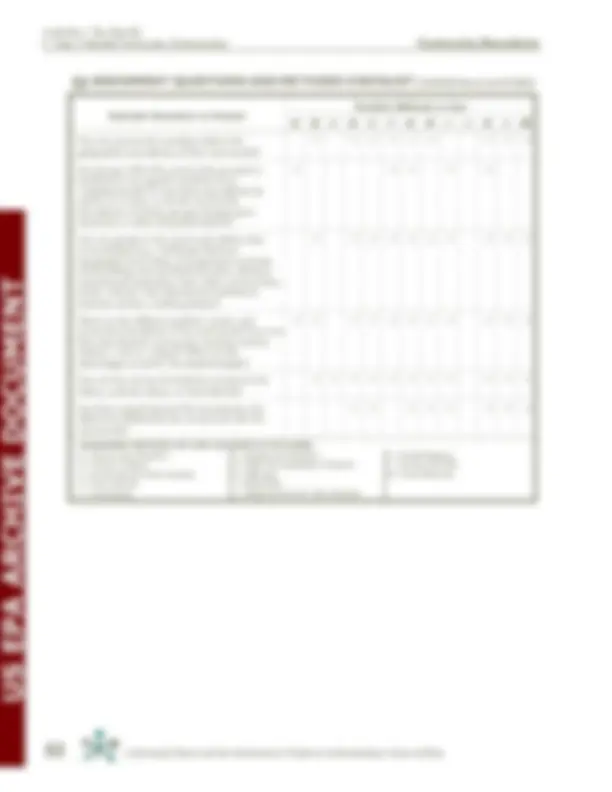
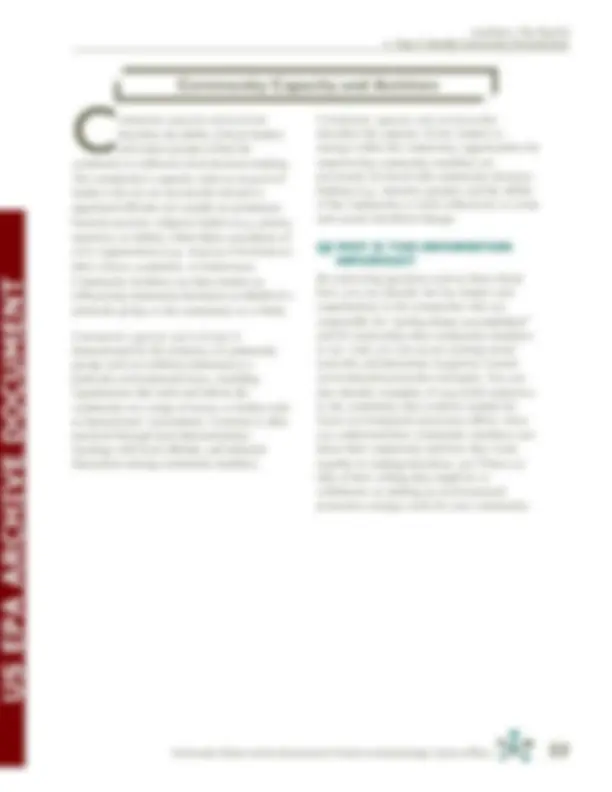
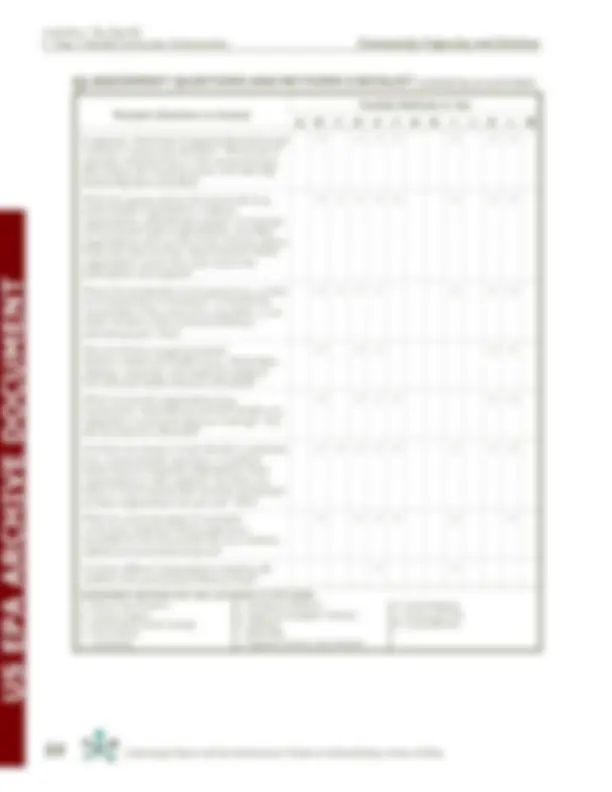
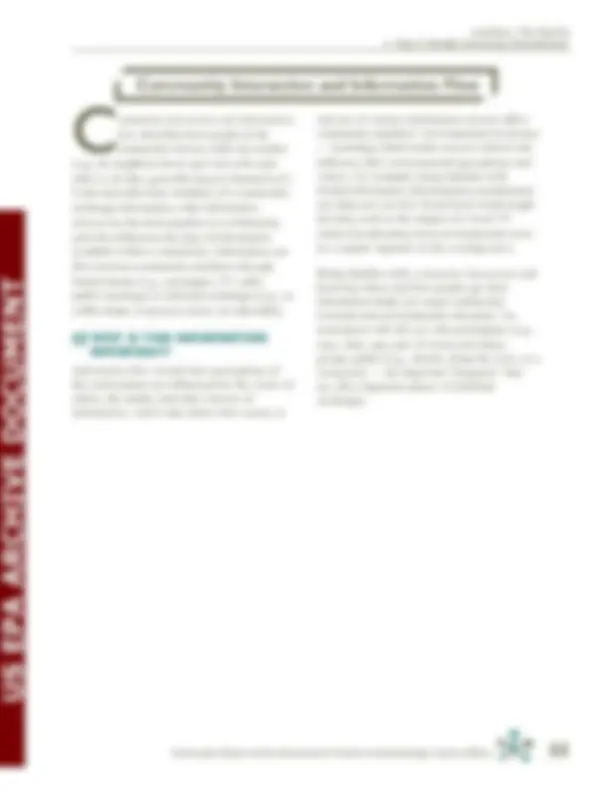
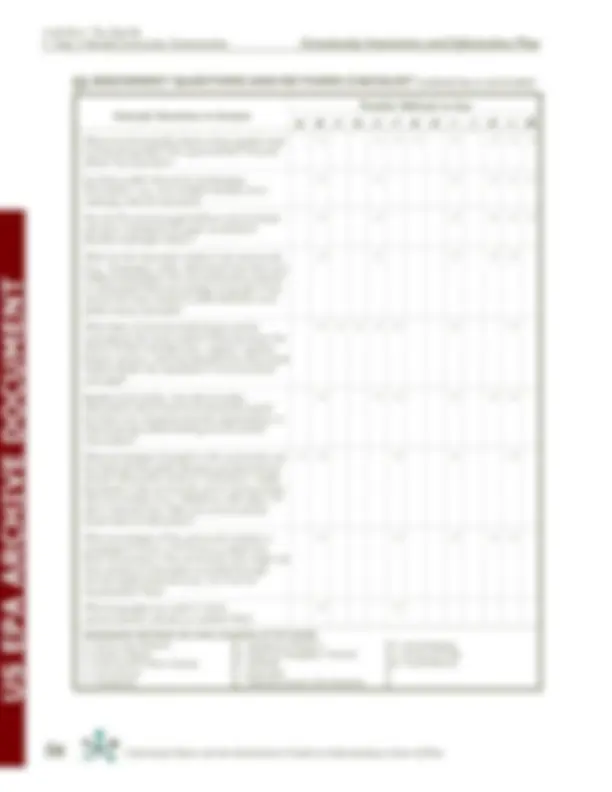
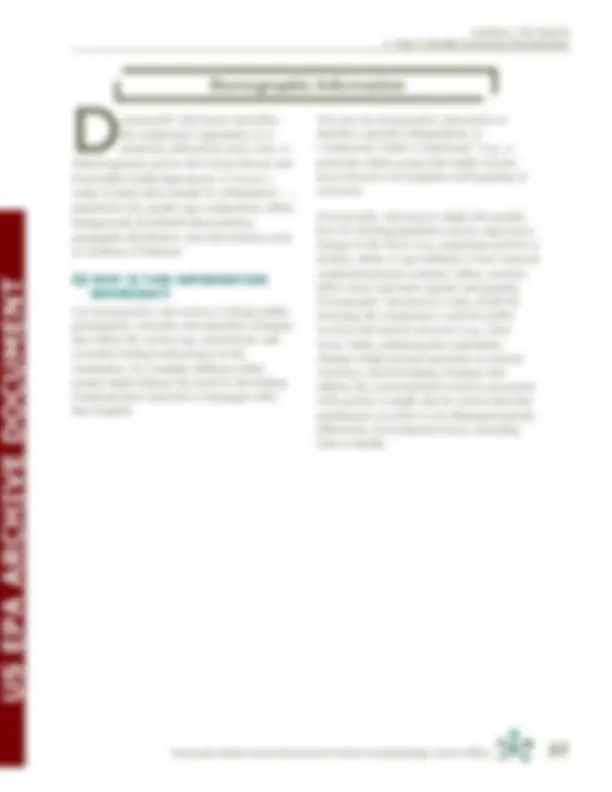
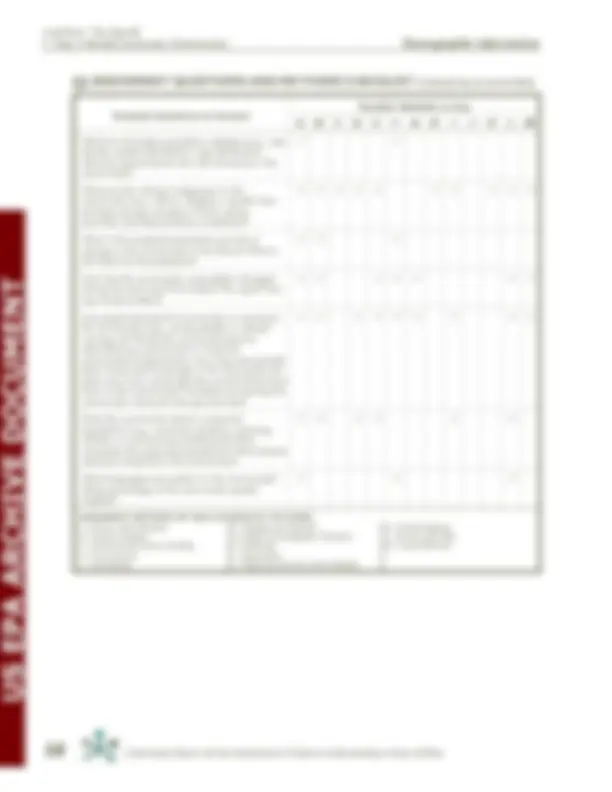
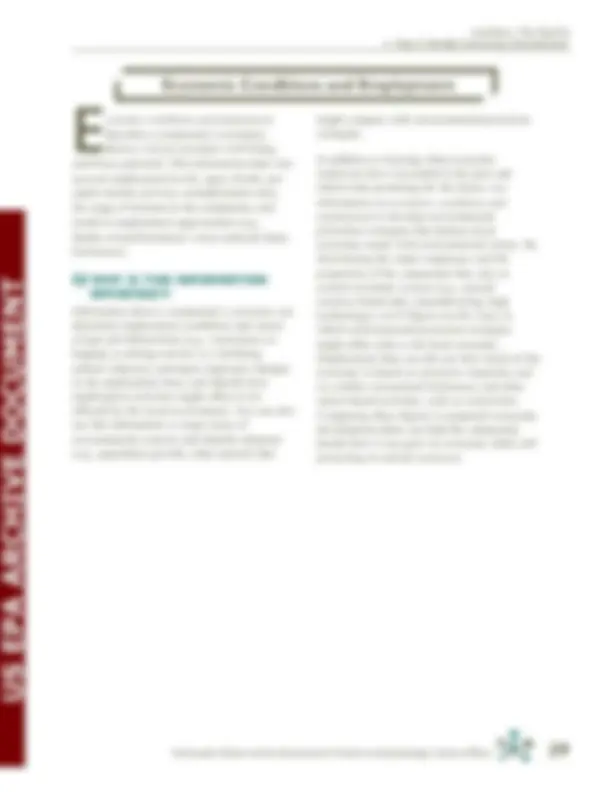
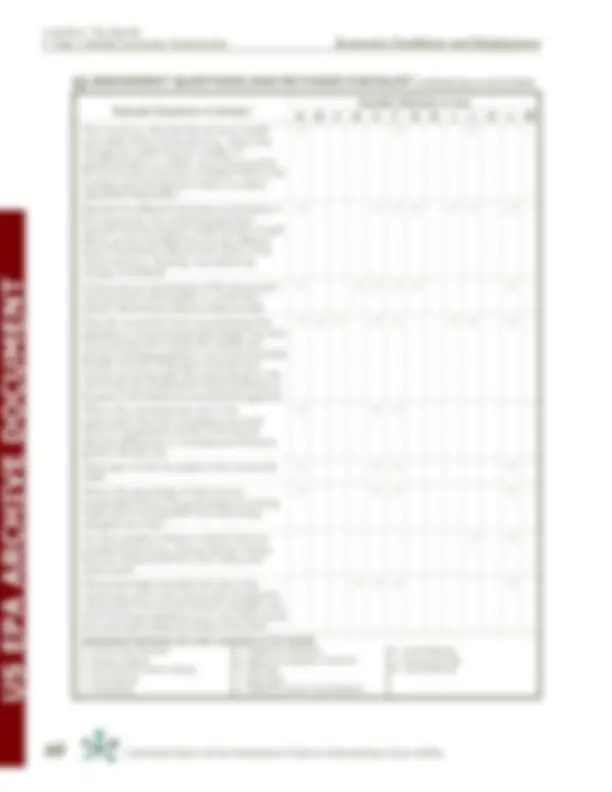
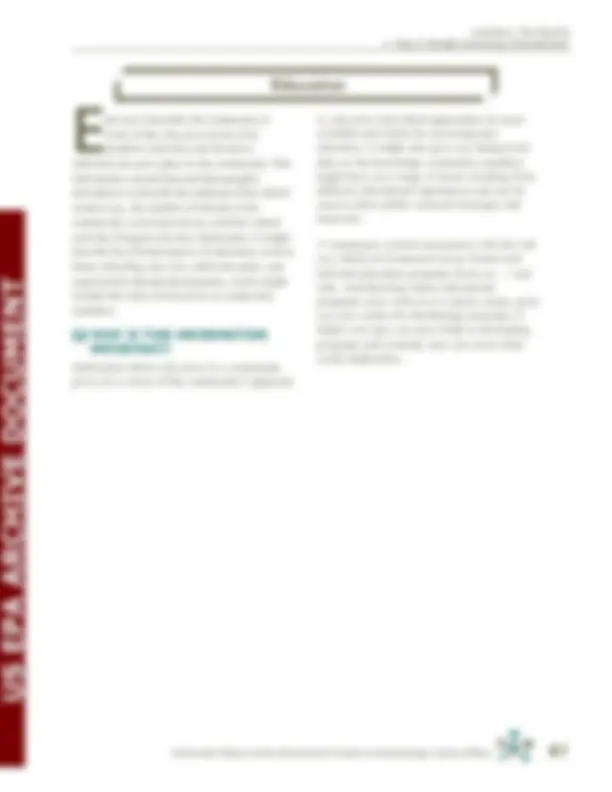
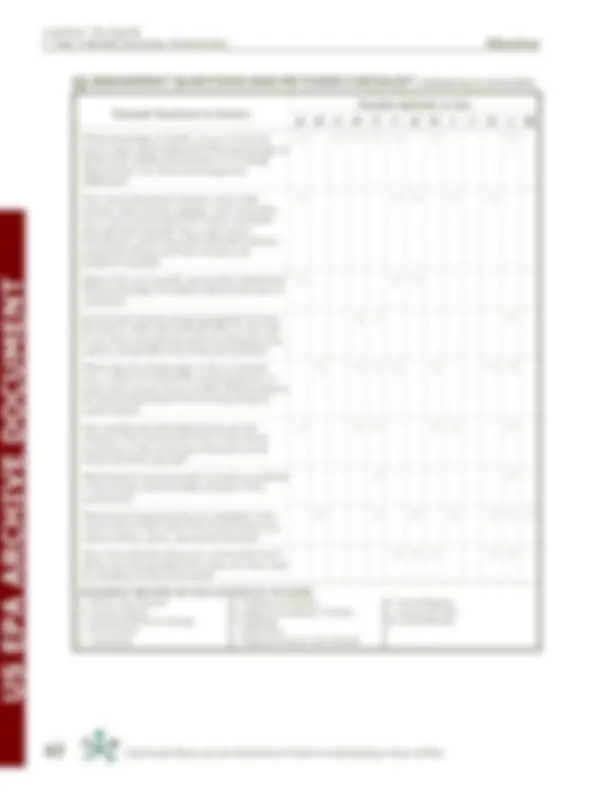
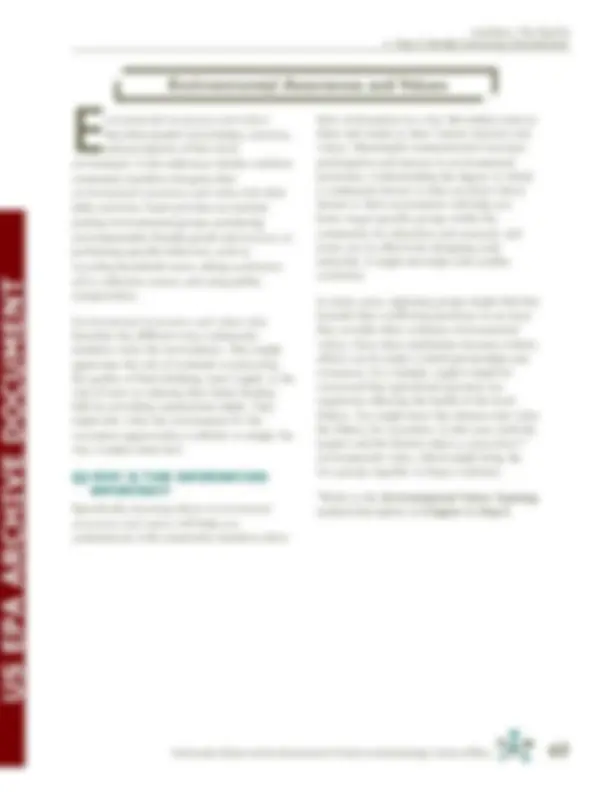
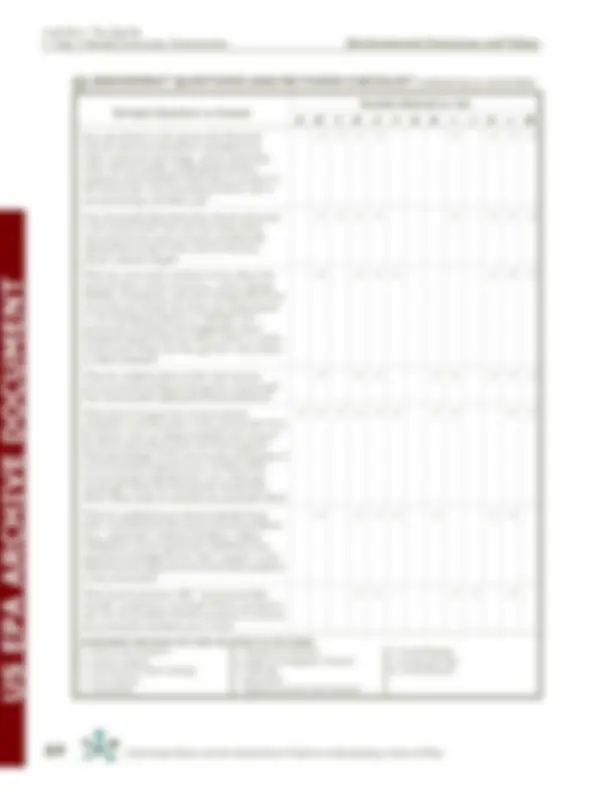
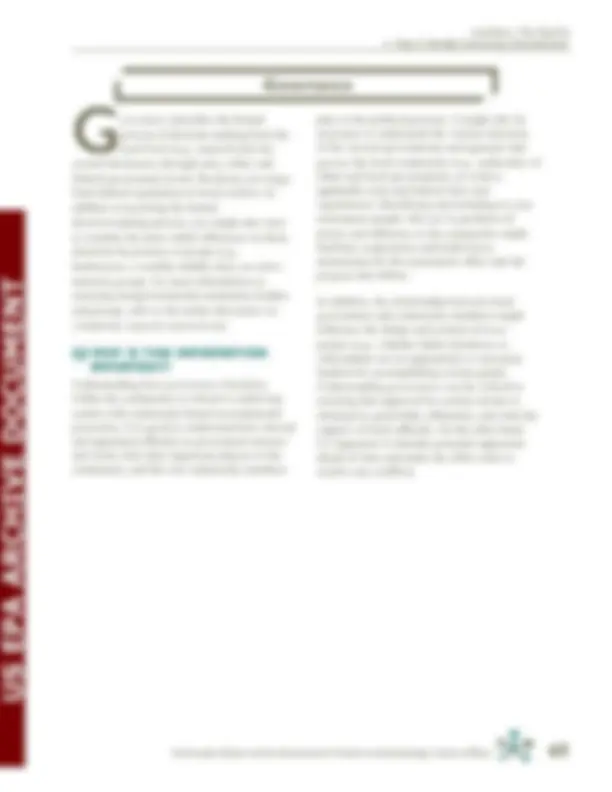
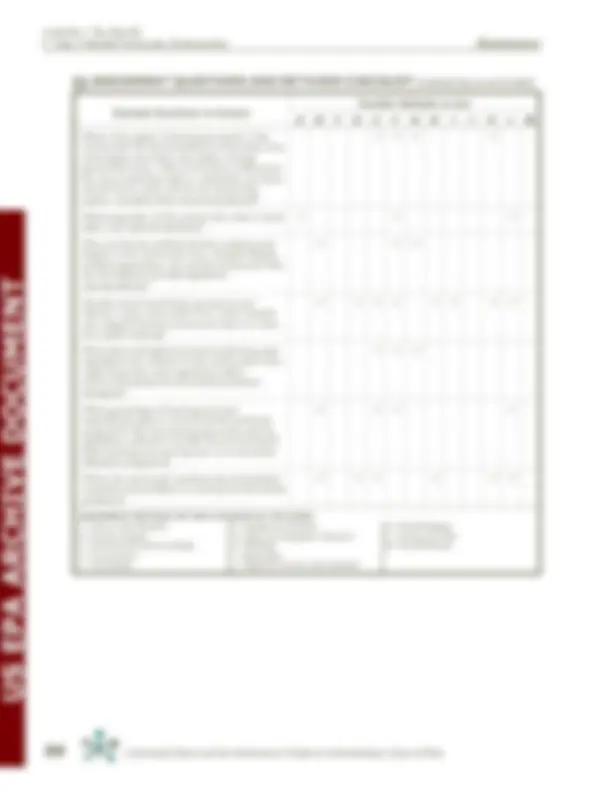
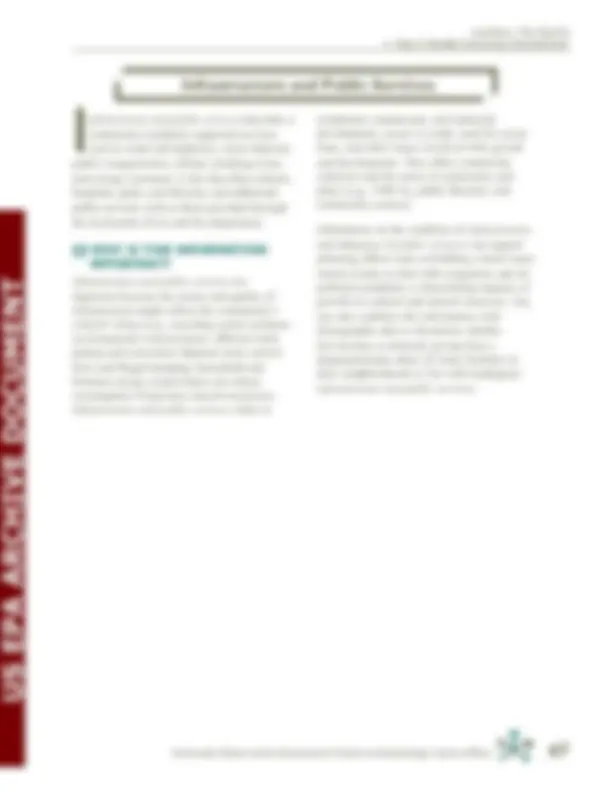
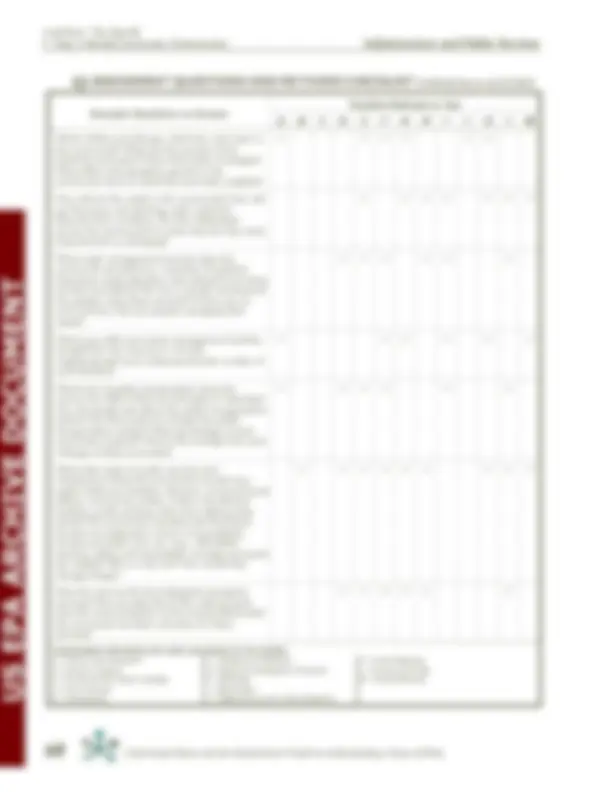
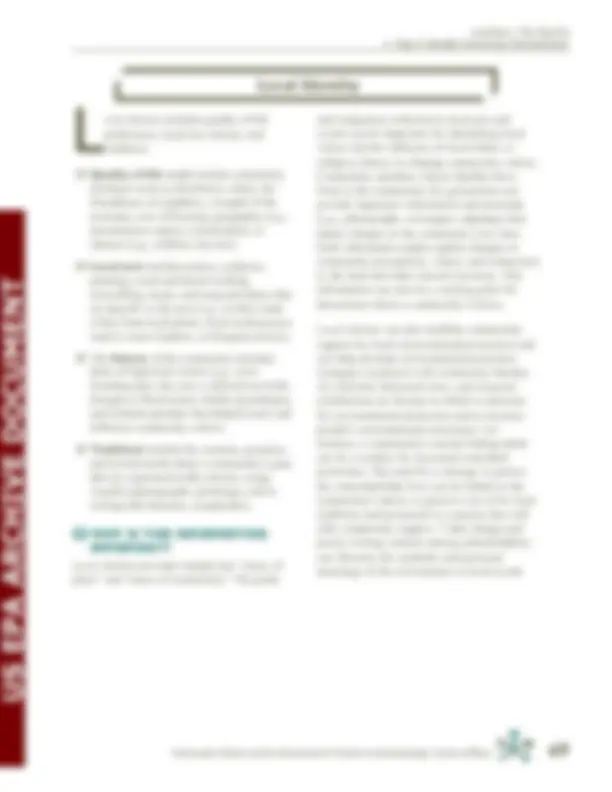
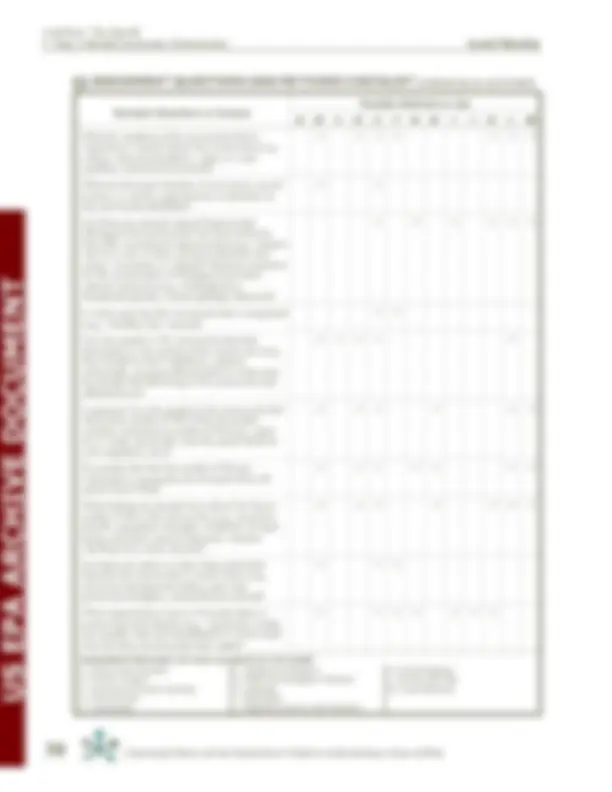
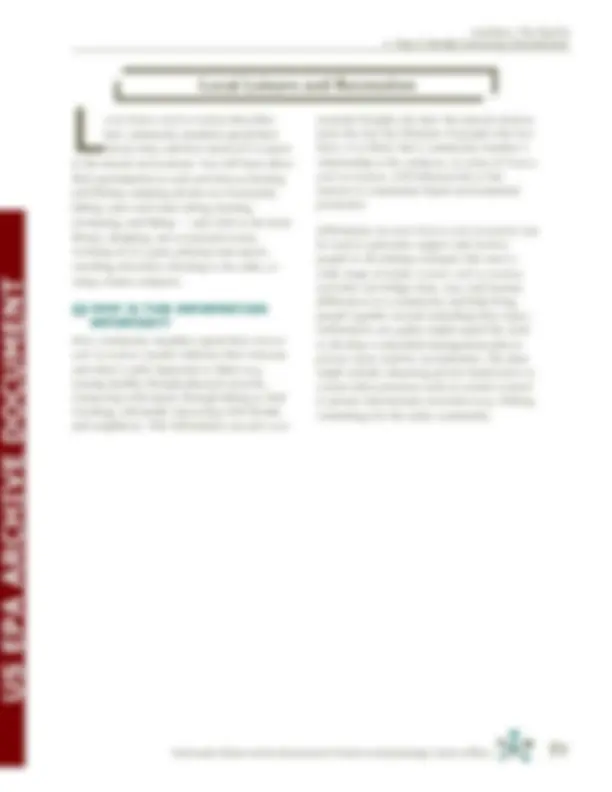
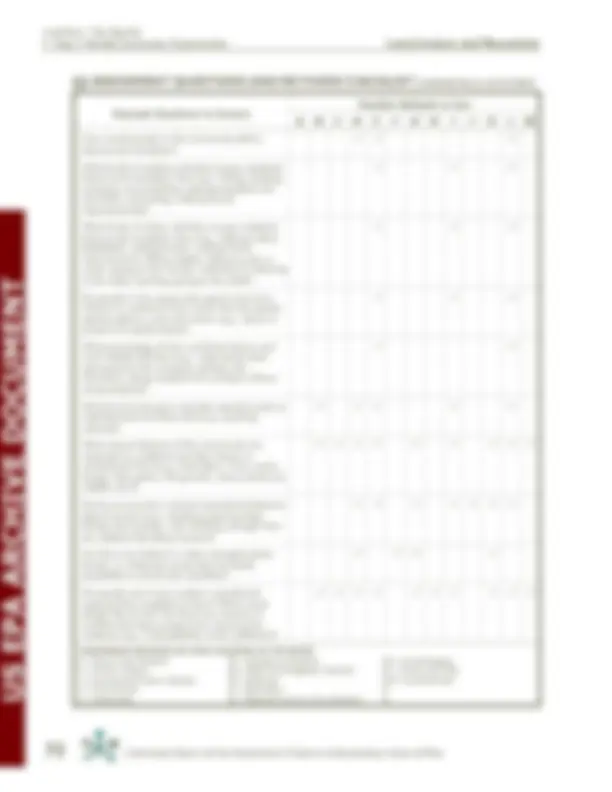
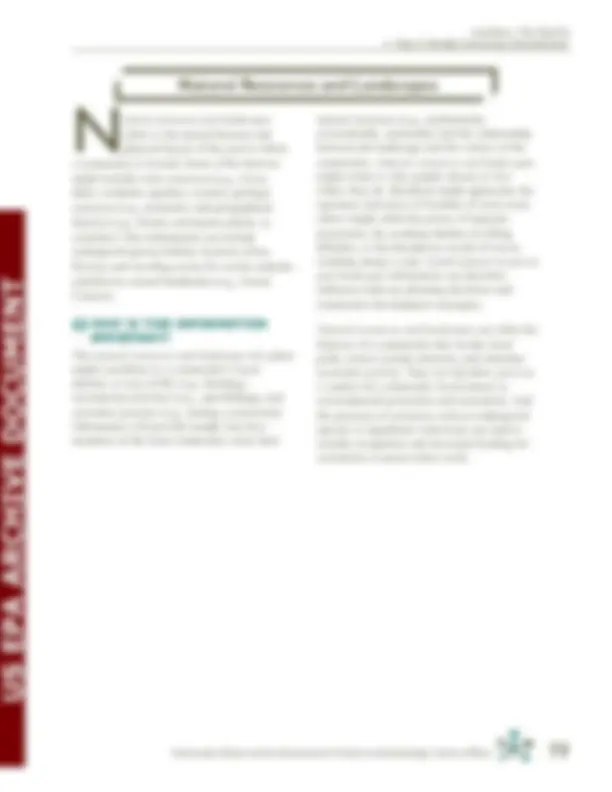
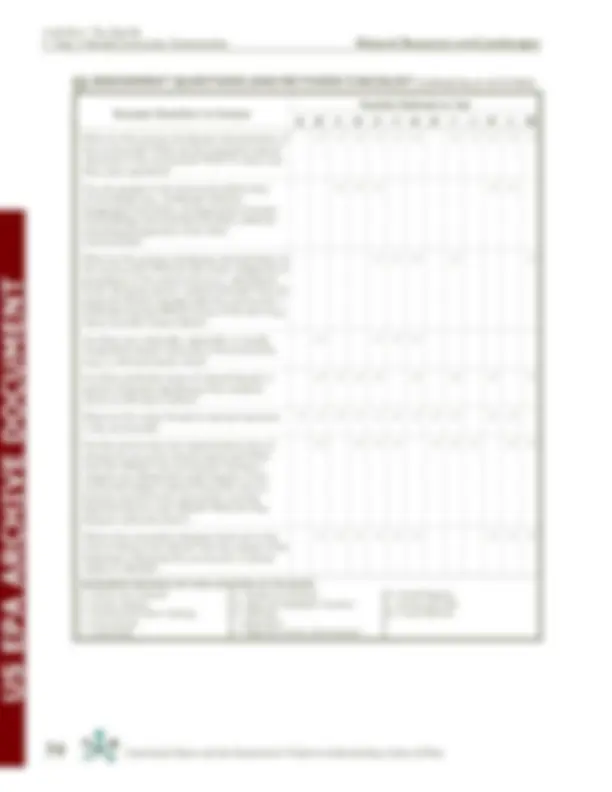
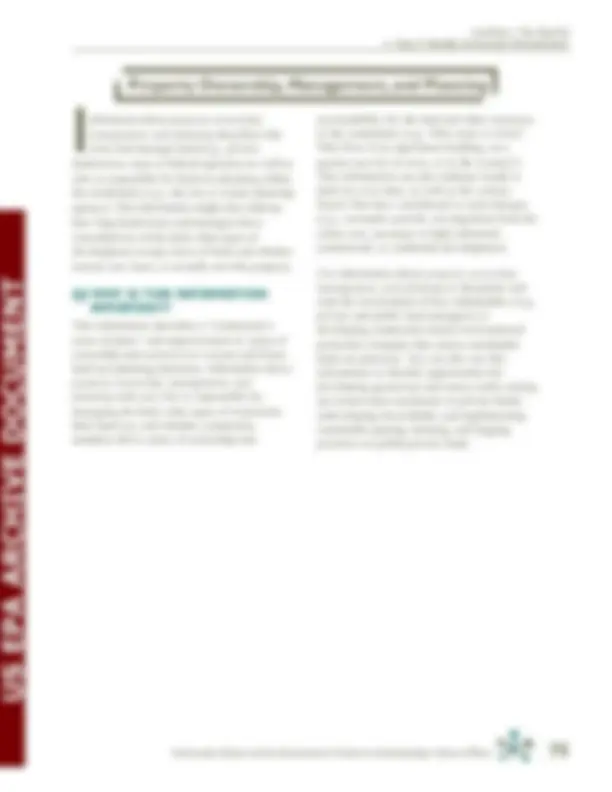
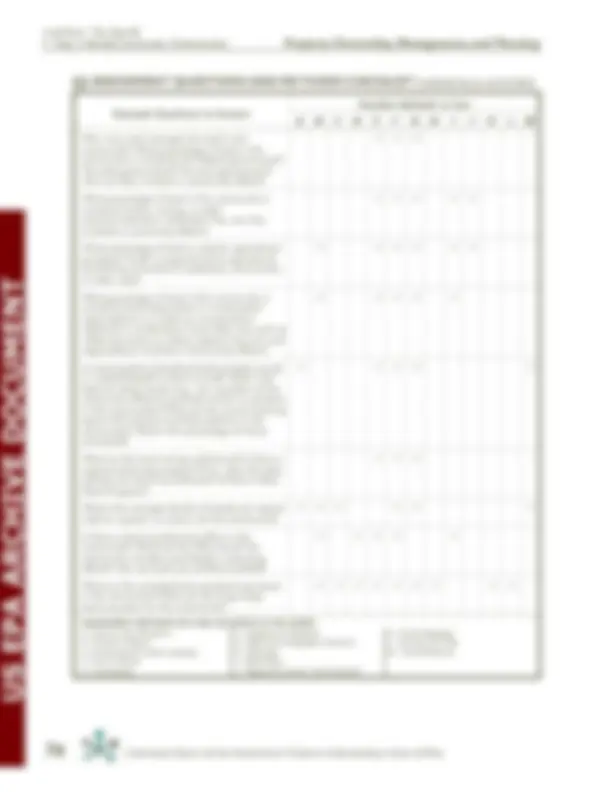
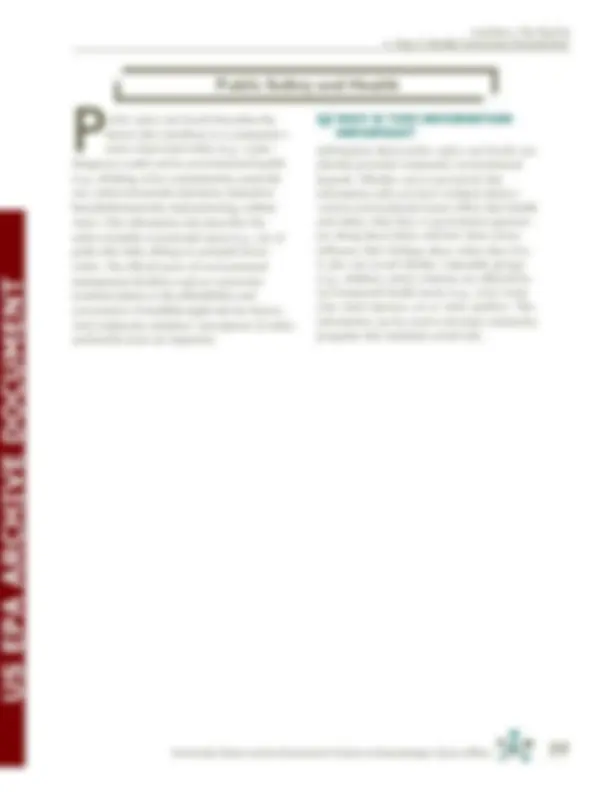
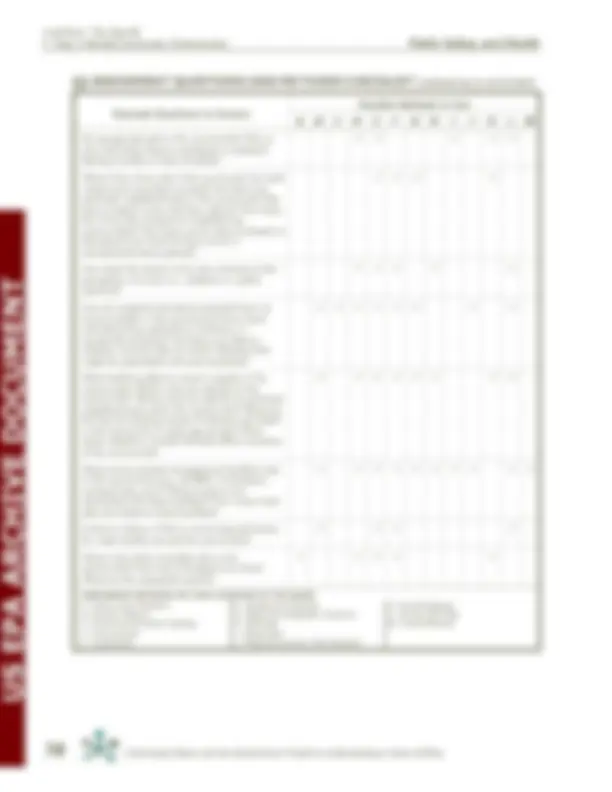
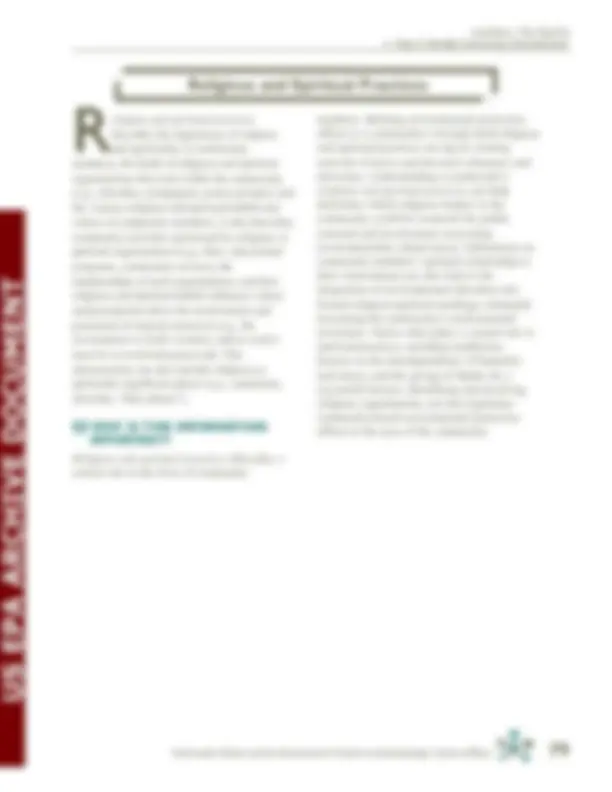
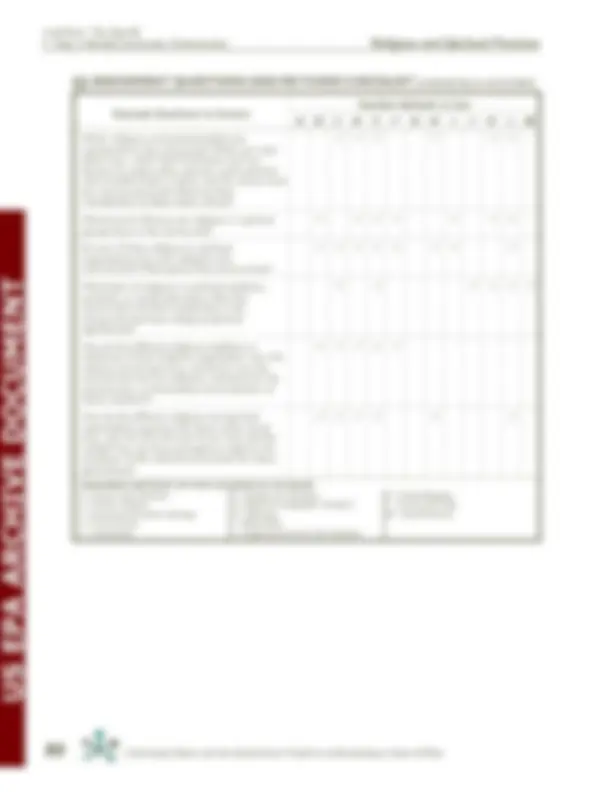
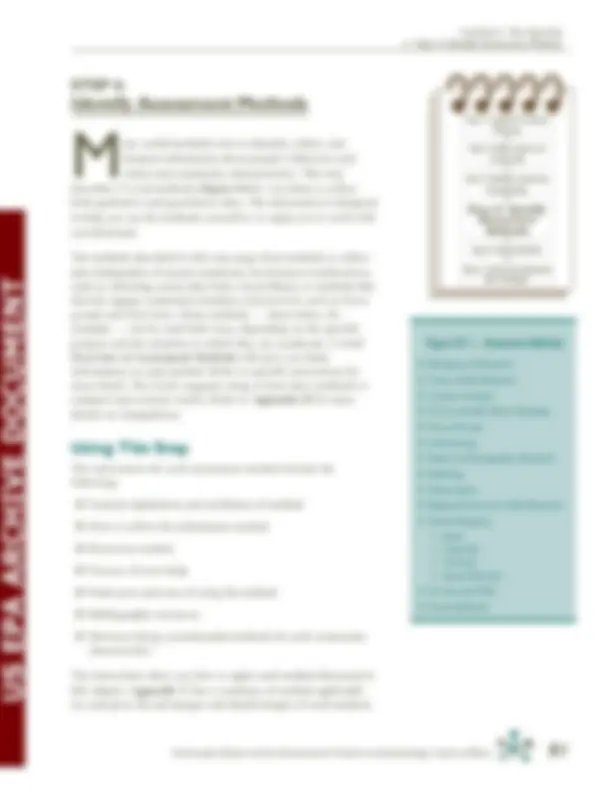
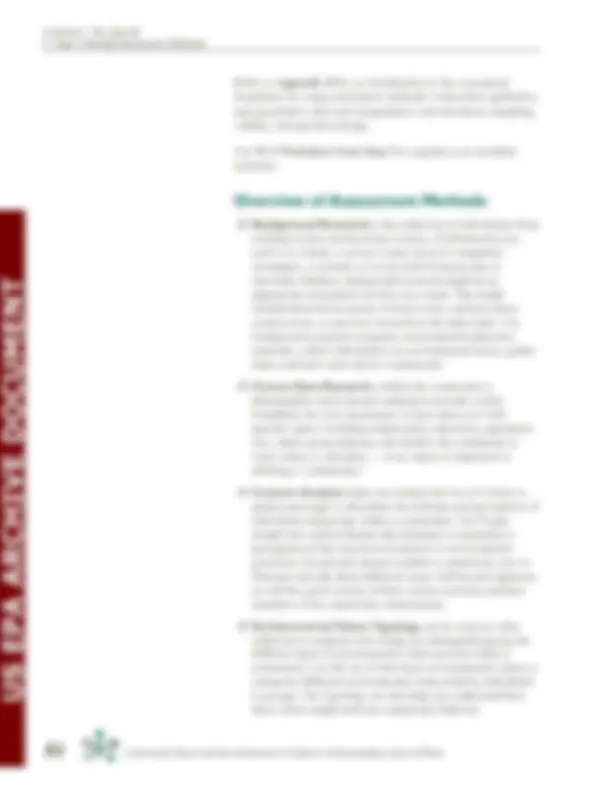
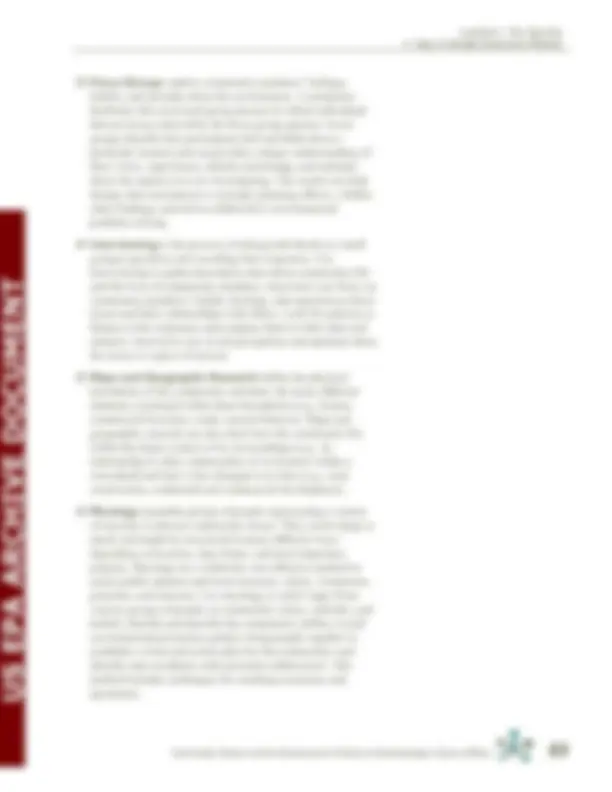
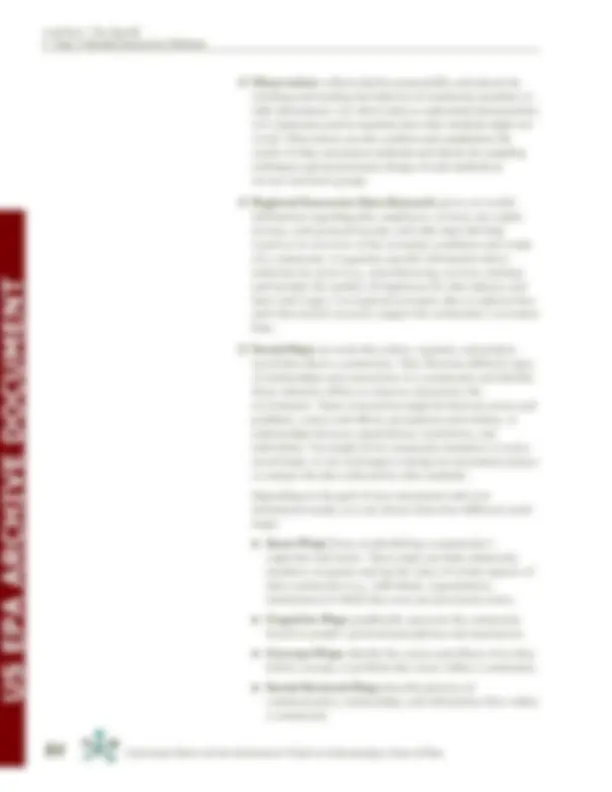
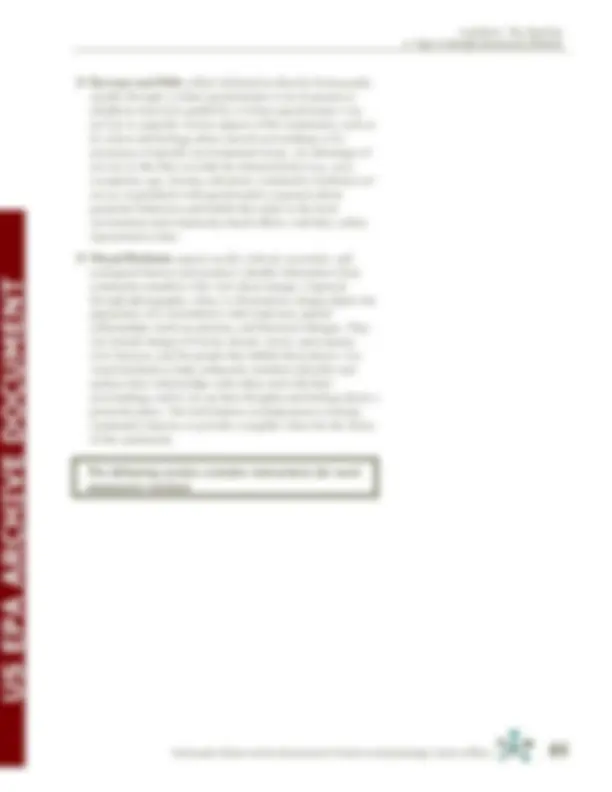
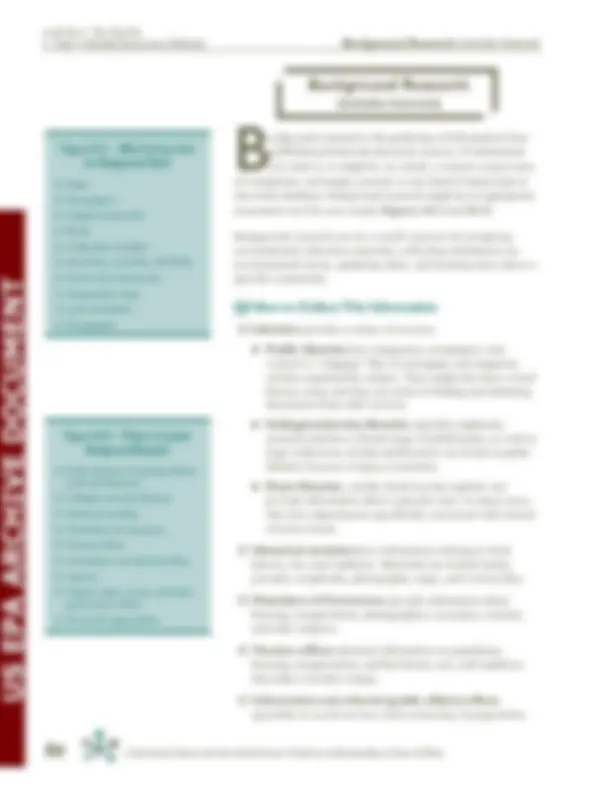



Study with the several resources on Docsity

Earn points by helping other students or get them with a premium plan


Prepare for your exams
Study with the several resources on Docsity

Earn points to download
Earn points by helping other students or get them with a premium plan
Community
Ask the community for help and clear up your study doubts
Discover the best universities in your country according to Docsity users
Free resources
Download our free guides on studying techniques, anxiety management strategies, and thesis advice from Docsity tutors
Insights into defining community, both as people and place, and the importance of community cultural assessment in developing effective environmental protection strategies. It discusses various methods to identify community characteristics and engage community members in decision-making processes.
Typology: Study notes
1 / 294

This page cannot be seen from the preview
Don't miss anything!





























































































ACKNOWLEDGMENTS
This Guide was prepared by EPA’s former Office of Policy and the Office of Water with support from EPA contracts 68-W5-0054 and 8W-2690-NASA, and numerous social scientists and environmental professionals.
For additional copies of this Guide , call the National Center for Environmental Publications and Information at (513) 489-8190, (800) 490-9198, or by mail to NCEPI, U.S. EPA Publication Clearinghouse, P.O. Box 42419, Cincinnati, OH 45242, or by e-mail to ncepiwo@one.net.
If you want to cite the Guide , please refer to it as Community Culture and the Environment: A Guide to Understanding a Sense of Place , 2002, U.S. EPA (EPA 842-B-01-003), Office of Water, Washington, DC. Permission to copy all or part of it is not required.
PROLOGUE
nce upon a time a proud people lived on the top of a mountain. From that summit, it seemed, they could see everything everywhere. Daily clouds obscured the distant horizon, but occasionally they would glimpse a huge mountain far in the distance. These momentary revelations notwithstanding, they were content in believing that the whole world was what they could see on their own mountain. Because of this they did not realize that their mountain was in reality a foothill, one of many that circled the huge mountain in the distance. Nor did they know that other people on other foothills shared the same belief that what they saw from their own summit was the whole world, everything everywhere, even though it was but one of many foothills.
One day a terrible cataclysm struck the land. A violent tremor shook the foothills until they began to crumble. All the proud people had to descend from their particular mountain to seek refuge in the lowlands at the base of the huge mountain. There they discovered that other people from other foothills had also descended to the lowlands to escape the wrath of nature. Now suddenly the land became quiet, the clouds lifted, and all the people could see for the first time the huge mountain in all of its towering glory whereas before they had known it only in part through a fleeting glimpse.
But nature was not finished with these people. A great flood came thundering into the valley, and all the people scrambled onto the higher land on the side of the huge mountain to escape the deluge. Day after day the flood waters rose. All of the people realized that they would need to ascend the
mountain together to save themselves. But as they began to climb, great disputes broke out between the different people, for each had their own idea about how best to climb the mountain. After all, each of the people had long believed that they had seen everything everywhere and therefore they knew everything everywhere. It was difficult for them to admit they had seen only a portion of the huge mountain and only from the angle of vision of their particular foothill.
As the flood waters continued to rise, the clamorous disputes yielded to the urgencies of survival. Despite their different points of view, they had one thing in common: they had to climb the hill to survive. As they debated their dilemma, they came to a new revelation. Each of the different people knew a different part of the huge mountain — one knew where the rockslides were, one knew where water was to be found, another knew the passage through difficult terrain. Now they came to a new vision of everything everywhere, a new vision of truth. They realized that they had been looking differently at the same mountain, and, once they exchanged views with the common purpose of climbing to the mountaintop of truth, they developed a more complete understanding of the mountain than any of them had developed separately. They formed a community of climbers and began the difficult ascent. They are still climbing and we do not know the end of the story.
Wong, F.F. 1991. Diversity and community: right objectives and wrong arguments. Change: The Magazine of Higher Learning, July/August. Heldref Publications, Washington, DC. Reprinted with permission.
Community 3: Community and Pollution Prevention Community 5: Social Assessments of Well-being in
CHAPTER 1
Introduction
C
ulture is like a tree. If the green branches — a people’s language, legends, customs — are carelessly chopped off, then the roots that bind people to their place on earth and to each other also begin to wither. The wind and rain and the elements carry the topsoil away; the land becomes desert.
— Mariano Lopez Tzotzil Indian Chamula, Chiapas, Mexico (Western, 1994)
For more details, see Community-based Environmental Protection: A Resource Book for Protecting Ecosystems and Communities (EPA 230-B-96-003, September 1997), as well as Watershed Approach Framework (EPA 840-S-96-001), Top 10 Watershed Lessons Learned (EPA 840-F-97-001), and Clean Water Action Plan: Restoring and Protecting America’s Water (ISBN 0-16-049536-9). Also see http://www.epa.gov/ecocommunity/links.htm and http://www.epa.gov/owow/org.html.
What Is the Community Culture and the
Environment Guide****?
Community Culture and the Environment: A Guide to Understanding a Sense of Place addresses the social and cultural aspects of community-based environmental protection. The Guide offers a process and set of tools for defining and understanding the human dimension of an environmental issue. It gives leaders in government agencies and in nongovernmental organizations and tribes (such as directors of watershed groups, public health officials, outreach coordinators, environmental educators, and environmental justice workers) technical tools for more effectively working with the public on environmental protection efforts. The Guide is based on the elements of social science theory and methodology (e.g., anthropology, cultural geography, political science, and sociology) that are most relevant to defining and understanding community life as it relates to environmental issues. (The full spectrum of social science theory and methods is well beyond the scope of the Guide .)
The Guide can help you work more closely and effectively with community members to develop environmental protection goals, educational and outreach tools, and indicators to measure progress. It also can help you engage community members in planning for, making decisions about, and participating in environmentally sustainable practices ( Figure 1-2 ).
Community-based environmental protection recognizes that values held both individually and as a group contribute to the
CHAPTER 1: Introduction
Sustainable development is development that meets the needs of the present without compromising the ability of future generations to meet their own needs (Brundtland Commission Report).
quality of community life. Expression of values through social and cultural practices can create a “sense of community.” Many of these values relate directly to the “place” in which people live, thus creating a strong “sense of place.” Use of the Guide can lead to a clearer understanding of how such feelings can translate into environmental solutions and actions.
Community means many things to many people. Defining it is an early — and essential — part of any community-based project. The Guide discusses the concept of “community” and includes a worksheet and tools to help you define community in a way that best fits your needs. Defining community is an iterative process; you might repeatedly refine your definition as you use the Guide.
The Guide attempts to understand a local community by looking at issues that are “below the surface” to understand what people care about and why, and what motivates people to form partnerships to take action. It takes a systematic approach to answering key questions about a community’s values, attitudes, and beliefs; how they are expressed in daily life; and how they relate to environmental issues.
How Will the Guide Help?
By working with the Guide , or conducting what will be referred to as a community cultural assessment or simply assessment , you will
þ Evaluate your starting point, or readiness, for conducting an assessment project.
þ Set goals as a starting point of the assessment process.
þ Establish a project team and develop a work plan to guide your assessment project.
þ Define the community you want to assess.
þ Choose the community characteristics and questions you want to investigate.
þ Select appropriate methods and tools for your assessment project.
CHAPTER 1: Introduction
þ CHAPTER 3. How to Use Assessment Results. This chapter discusses how assessment information can contribute to and support a variety of environmental protection strategies at the community level.
þ CHAPTER 4. The Tool Kit. n STEP 1: Conduct Pre-project Planning helps you assess your readiness to begin an assessment project and leads you through such necessary steps as forming a team, defining your goals, establishing your budget and evaluating your financial resources, and understanding the ethics of assessment. n STEP 2: Define Goals and Community includes information and worksheets to help you set your goals and understand the community with which you plan to work. n STEP 3: Identify Community Characteristics outlines 15 community characteristics and related questions to consider using in your assessment project ( Figure 1-3 ). This section can be used as a checklist for determining your assessment goals and questions — you can pick and choose from it and supplement, as needed, with your own questions. n STEP 4: Identify Assessment Methods describes in step-by-step detail how to use 13 different tools to answer questions about your community and to develop a community cultural assessment ( Figure 1-4 ). Bibliographic resources are included. n STEP 5: Analyze Results presents guidance on how to store, organize, and analyze the raw information the assessment methods generate. It also suggests ways to summarize, present, and describe your findings in an understandable and convincing manner.
CHAPTER 1: Introduction
Step 1: Conduct Pre-project Planning o Step 2: Define Goals and Community o Step 3: Identify Community Characteristics o Step 4: Identify Assessment Methods o Step 5: Analyze Results o Step 6: Select and Implement Best Strategies
· Background Research · Census Data Research · Content Analysis · Environmental Values Typology · Focus Groups · Interviewing · Maps and Geographic Research · Meetings · Observation · Regional Economic Data Research · Social Mapping
· Surveys and Polls · Visual Methods
· Community Boundaries · Community Capacity and Activism · Community Interaction and Information Flow · Demographic Information · Economic Conditions and Employment · Education · Environmental Awareness and Values · Governance · Infrastructure and Public Services · Local Identity · Local Leisure and Recreation · Natural Resources and Landscapes · Property Ownership, Management, and Planning · Public Safety and Health
n STEP 6: Select and Implement Best Strategies is discussed in Chapter 3 and in Appendix A, Community Case Studies.
þ Appendices.
n APPENDIX A: Community Case Studies. n APPENDIX B: Conceptual Foundation for Assessment Methods: Qualitative and Quantitative Data and Triangulation (including sampling, validity, and questionnaire design). n APPENDIX C: Matrix of Assessment Methods. n APPENDIX D: Bibliography.
þ Definition Boxes, Figures, and Tables illustrate key points and explain important terms.
þ Bibliographic Resources suggest resources for further reading.
CHAPTER 1: Introduction